It took me some time to get around to finally playing Kingdom Come: Deliverance, and I’m glad I finally played it. Created by Warhorse Studios and released in 2018, Kingdom Come is a first person historical open world action RPG. This makes it one of a kind as far as I know; when you think if RPGs, they’re almost always either fantasy, science fiction, or post-apocalyptic. I can’t think of any other historical RPGs. It is a vast game, with my first complete playthrough requiring 82.6 hours to reach the epilogue plus another 20 hours on top of that for the two DLCs, From the Ashes and The Amorous Adventures of Bold Sir Hans Capon. So that’s a total of 102 hours, and that includes a fair amount of side quests but not nearly all of them.
Modern game development can generally be split up into four groups:
Group A: “We’re an AAA studio, let’s figure out how to spit out the highest grossing product in the shortest amount of time. Found a successful formula? Stick with it. We develop in cycles, no time for major new features or innovation that won’t significantly increase sales anyway!”
Group B: “Alright guys, we aren’t very skilled or capable but we see that a lot of nostalgic gamers like old games and old graphics. Let’s just copy that – make games with old technology, the actual quality of the game is irrelevant. If it appeals to nostalgia, it will sell!”
Group C: “Make an appealing looking Kickstarter concept (usually appealing to nostalgia but not always), make some cool looking half-assed demos and environments, get that kickstarter/patreon money and then skip town!”
Group D: “The game industry is full of the game creators described above, and we’re sick of them! We want to make our own vision a reality, however because we position the art above all, we have no investors, no money, barely any employees, and not much actual development experience or skill. The end result will probably end up being disappointing and broken since we didn’t have the resources to make our complete dream a reality.”
On the rare occasion money and manpower make their way to Group D, we end up with games like Kingdom Come: Deliverance. This is a game that truly exceeded my expectations, even though for once my expectations were not extremely low.
So what we have here is medieval historical fiction, and it will be evaluated as such (and as an open world action RPG of course). The game’s plot includes real events, and even real people as main characters. Medieval historical fiction is a genre that is typically represented very poorly in Hollywood, as it is ripe with incorrect stereotypes. As far as video games go, it is usually represented in strategy games such as Medieval: Total War and its sequel, and the Crusader Kings series. The one RPG series Kingdom Come will frequently be compared to is Mount and Blade, which is entirely fictional but lacks high fantasy elements and does draw upon historical elements more than most RPGs.
Kingdom Come is not like most other open world games. You don’t play as a chosen hero, you play as a Henry of Skalitz, a blacksmith’s son and apprentice – a peasant and boy do you feel like one from the get go. You are utterly average. At level 1, you are greatly inferior to any soldier and bandit in combat; and by inferior, I don’t mean only in terms of passive stats like in The Elder Scrolls V: Skyrim and any other action RPG. You see, Kingdom Come is the only action RPG to handle combat in what I consider to be the right way (that I’ve discovered at least): leveling up doesn’t just increase your health pool, stamina pool, and damage. No, as you level up combat skills you unlock new attacks (prevalent in JRPGs sure, but read on) and your weapon swings become faster, more efficient, and less clumsy. Actual animated changes, in addition to the purely statistical ones and the new attacks and defensive maneuvers. This is how every action RPG should be, so that you feel the difference in mechanics as you go from peasant to legitimate man-at-arms.
It has a distinct learning curve, it is not something a casual gamer can just pick up and play, making it very much unlike Rockstar games, The Elder Scrolls IV and V, the modern Fallout games, Just Cause, Far Cry series, and most other open world games. New players certainly should not try Hardcore mode right off the bat, probably no one should. Hardcore mode is really only for those intimately familiar with the game. It is a proper hardcore mode that lives up to its name unlike the one in some of the aforementioned open world games, transforming the game into one that requires much more time and devotion, removing things such as fast traveling, tracking compass, tracking map (map becomes an actual map rather than a GPS), much of the active HUD in general, in addition to hardcore rebalancing that leans on realism. Read more about it here.
Hardcore mode is a real treat for me though, as it makes for the type of game I like most. I actually perform noticeably better in combat on hardcore mode, because I am paying more attention to enemy movements (which are incredibly well animated in combat, some of the best ever) rather than the HUD element you are told to focus on in normal mode. One more thing I’ll note on this subject is that on normal mode, Kingdom Come autosaves when a quest progresses. It also saves if you take a bath at a bath house, and most sleeping options let you save too. Otherwise, you can only save by using a Savior Schnapps item, which is an expensive alcoholic beverage. Hardcore mode takes away autosaves with quest progression.
Oddly enough, the open world game that Kingdom Come is most similar to from my experience isn’t Mount and Blade or any other RPG, it is S.T.A.L.K.E.R. NLC 7, a similarly hardcore experience (but even more so) that applies more real world logic to its world than the vast majority of games, as Kingdom Come does. Kingdom Come is one of those PC games, like many of the great classics, in which you should use more real world logic and thinking rather than using video game logic exclusively. We’ll illustrate why in the later sections.
Kingdom Come’s introduction does a wonderful job setting the tone for the rest of the game. Right off the bat, through its gameplay and tutorials, it teaches players that this is an authentic medieval world like no other, and you must interact with it as such. You can’t, for example, run around traversing all terrain as if it’s nothing; steep hills and difficult terrain and dense foliage cannot be traversed. The language of this game’s characters, the tasks carried out by its NPCs, the laws and rules of this world are all historical: it is illegal to wander around in the dark without a light source, walking around with a weapon equipped is not advised, appearance is extremely important and affects dynamic encounters considerably (not just how you’re dressed but how clean you are), on top of things you’ve probably seen in The Elder Scrolls like the ability to be arrested and the ability to steal and attack anyone.
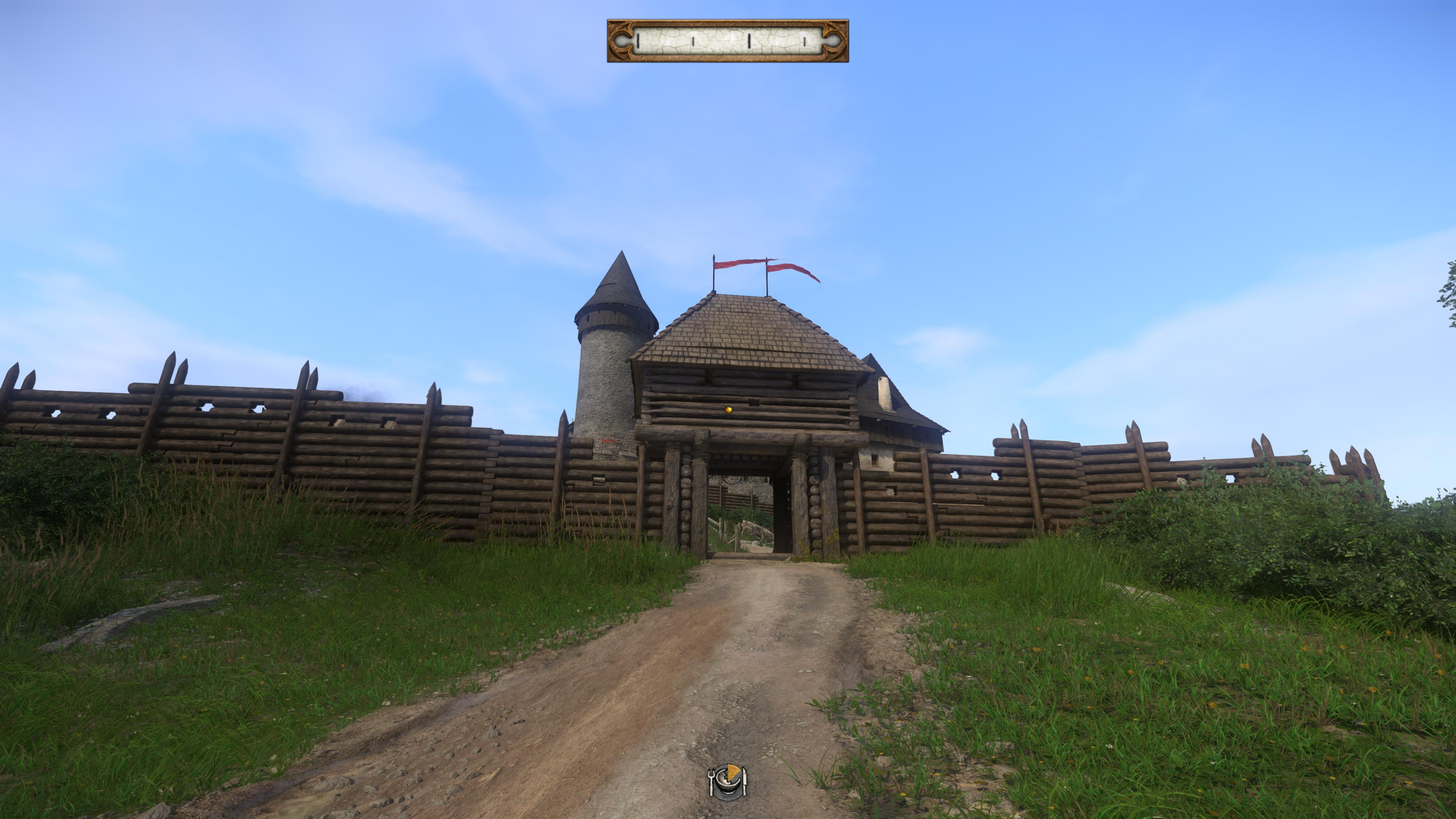 Timber castle walls rather than stone? You almost never see this in any historical fiction in any medium. Very nice.
Timber castle walls rather than stone? You almost never see this in any historical fiction in any medium. Very nice.
During the playable introduction (which can last for up to 2 hours), you get a taste of what life was like as a medieval peasant – a blacksmith’s son and apprentice more specifically. You get a taste for work life (which includes actual historically accurate smithing/forging, something you almost never see in Hollywood or games), social life which teaches you the importance of classes during this period as well as how people interacted, and you get to experience the brutality of war.
It is an almost perfect introduction, with the only flaws being in the design of the cinematic cutscene as your village, Skalitz, is attacked and then razed. More specifically, the cutscene portrays combat in the usual unrealistic, overly cinematic and fake Hollywood style, with even plate armor doing absolutely nothing against swords and one important character fighting through scores of men like some superhero. The funny thing is, this is not representative of how combat actually is in the game, and what a relief. We’ll get more into the combat later.
Also, while Skalitz was indeed razed in reality, the village had been evacuated before it was attacked, save for one woman and her pig according to historical records. So the fact that the village is attacked while people are living happily in it during the events of the game is a work of fiction used to drive the plot. As someone who strongly values both historical authenticity and accuracy in historical fiction, I find this change to be tolerable. It is inaccurate, but it is understandable why this change was made. A reasonable change to create drama, though ultimately I personally prefer as much accuracy as possible.
The visuals of Kingdom Come will immediately jump out to probably any player. Not just the technical graphics, but more so the art style. This is an unparalleled level of historical authenticity from my experience, I have never seen medieval Europe depicted so honestly. The architecture design and detail, the materials used, the design of villages and towns and castles on both a micro and macro scale, the scale of the world (no unrealistically tiny towns/villages and castles unlike Skyrim), this is one of the utmost detailed game worlds ever designed. You don’t have to be interested in medieval Europe to immediately notice this. The geometry/terrain is also properly complex, rather than being excessively flat and repetitive in games like Skyrim (although Playstation 3/XBOX 360 undoubtedly contributed to these limitations and others). For a deeper, more knowledgeable look at this brilliance, see these videos from Shadiversity:
As detailed as it is, some doors in the game world aren’t usable, but the vast majority are. Overall, Kingdom Come: Deliverance delivers an experience that is almost like using a time machine to go back to 1403. Thankfully, this authenticity extends far beyond level design and visuals, as it is a driving force behind the game’s entire writing and gameplay design as we’ll soon explain.
When some of the most consistent inaccuracies in Kingdom Come’s world design (architecture and structures and related topics) are excessive usage of wooden planks, wax candles, lack of murder holes, and the excessive loose animals but that’s more the result of bugs and parts being incomplete, and when what you’ve designed can be built in the real world and actually work as intended, you know you’ve done a spectacular job! This game world is even detailed enough to have features like tanners being placed downwind due to the odors they create. Bravo, Warhorse Studios, you really brought this game world to life. There are a number of inaccuracies that I hope the sequel addresses. Here is a good, thorough historical breakdown of the game.
With that said, I really hope the sequel uses the best of modern technology, such as mesh shader, so that we can see full scale cities, namely Prague. What a dream it’d be to walk through a mostly to-scale medieval Prague or any big city. Obviously we won’t need the entire city, but just a to-scale portion of it with the rest being inaccessible due to not being relevant. VR would make this even more incredible.
Let’s now dive deeper into the game, starting with its different gameplay elements.
Open World and Quest Design
Kingdom Come’s gameplay must be analyzed from two main perspectives: how it fares as an open world action RPG, and how it fares as historical fiction. In short, while there are a number of flaws and shortcomings (as with any other game), it does an excellent job in most respects. This is a refreshing change not only from modern games in general, but in this era of dumbed down and unoriginal RPGs largely made using 1990s technology (e.g. 2.5D), it is extremely refreshing.
Let’s start with the open world aspect. There has been a considerable increase in open world games ever since the release of Skyrim, but so few of these open world games (including Skyrim itself) consistently make intelligent use of this space. What good is a large nonlinear world if much of the space is never utilized (an issue that can be seen in the S.T.A.L.K.E.R. games, some of the Far Cry and Just Cause and Tom Clancy games, among others), or if quest design is barely any different than that of a linear game (an issue that plagues Rockstar games, including Grand Theft Auto V and Red Dead Redemption 2)?
Not that Kingdom Come is the king of open worlds, but it justifies having one thanks to nonlinear quest design (specific examples to come) and the need to carry out actual investigations (especially on Hardcore mode), decent design of dynamic encounters, hunting and alchemy mechanics, and the occasional importance of time.
Spoilers Below
One example of how Kingdom Come’s quest design takes advantage of its open world is with the main quest that involves investigating a counterfeiting operation. At some point during the main storyline, you come across hostile forces hidden within an old, abandoned village, with counterfeit currency. You bring this currency to the appropriate authorities, who task you with discovering its origins. At this point, you have several leads mostly revolving around the town of Sasau. There are several people there you can question in any order you like.
In my first playthrough of the game however, I was exploring the surrounding countryside near Sasau and came across an obscure path that seemed to go into a hill. This path had bandits guarding it, so this stood out to me. I took care of the bandits, followed the path, and uncovered an entrance to a mine. Inside was the headquarters of the counterfeiting operation – I came across it dynamically, by chance, and the dialogue even reflected this! The leader asked me who betrayed him and gave away his position, to which my character responded no one did and that I came across this place by deducing it as a logical place to carry out such an operation. Not entirely accurate to how I actually came across it, but this is a wonderful demonstration of nonlinear quest design and dynamic dialogue nonetheless. The type of role-playing and quest design sorely missing from the vast majority of modern (2010s and 2020s) RPGs.
In most open world games (especially Bethesda’s), the majority of quests are designed to take the player to a new location that’s meant to be interesting (sightseeing) and then give the player something to kill, and finally reward them with loot. Kingdom Come quest design is much deeper than that: it has a wide variety of flavor in its side quests, because many of them are designed to introduce the player to a different aspect of medieval life and society. These quests serve as history lessons, gameplay variety and flavor, they can level up a specific skill, and there’s the sightseeing element often too. These quests include introducing the player to different types of games played back then, like a fun archery game that is good for leveling up archery (this is a repeatable “Activity” rather than a quest actually). Or the Rattay tourney, which is held unrealistically frequently but it serves its world building purpose as we know that tournaments were a part of medieval society (especially the nobility). On this note, it does lack group melees and it lacks jousting most of all. Very surprising, but I do expect jousts to be in the sequel.
Various main quests (or pivotal side quests, especially DLC quests) serve as an introduction to a different aspect of medieval life as well. One example is the main quest in which the player must investigate an unknown hostile force – it is known that fighters are being recruited in Sasau, and the player must figure out who is doing the recruiting, why, and how big the force is. Eventually, the player makes contact with this group as an undercover prospect wanting to be hired. In order to be recruited, the player must carry out a task – infiltrate the local monastery and assassinate an apprentice monk, since this monk was once part of this hostile force before leaving them behind.
Technically, you can take the typical approach to this quest, the one you’d take in Skyrim: crouch-walk up to the monastery at night, pick the lock if your lockpicking skill is high enough (they are all the hardest type of lock), crouch-walk around looking for people, and then try to stealth kill the right one.
Additional complexity comes from this game’s more realistic stealth mechanics – no sneaking around in noisy metal armor for you. You can try to deduce who is the correct target by pickpocketing them, although when I tried this, I found no actual evidence (bug maybe?). Nor is there any evidence in any locked chest anywhere.
The path most players will follow is joining the monastery as an undercover monk. To do this, you must acquire written authorization from the appropriate authority, a separate part of this quest I won’t go into, although even that served as world building. Once this is done, you join the monastery as an apprentice, and undergo the appropriate ceremonies before living life as a new monk, carrying out your daily responsibilities and being punished if you do not. This is not a top down view of what it was like to be a monk, the game immerses you in the experience – another history lesson, and an effective one.
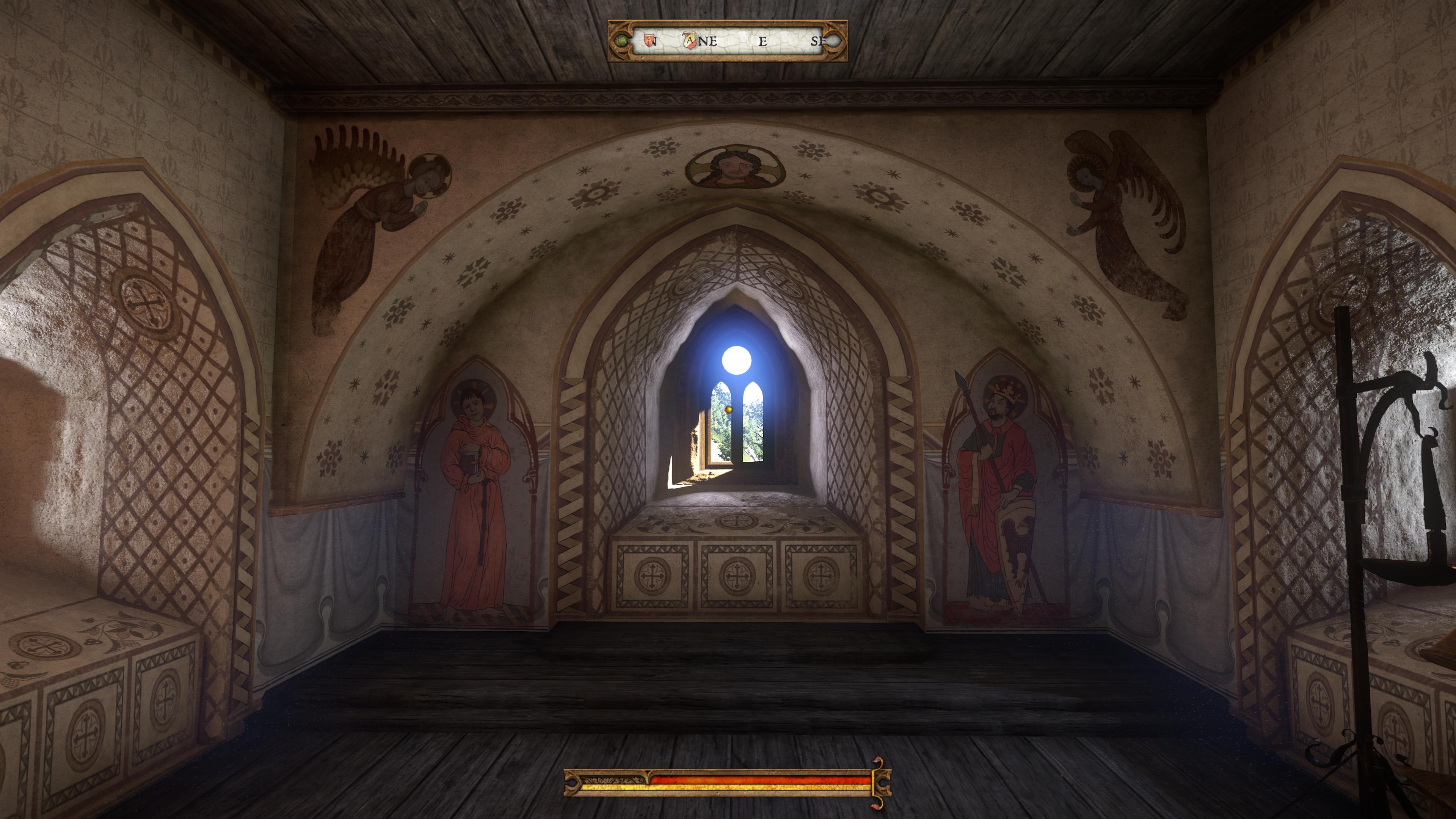 The detail of this game’s art design extends to its places of worship. Really like going back in time.
The detail of this game’s art design extends to its places of worship. Really like going back in time.
Perhaps Kingdom Come’s most substantial side quest is The Madonna of Sasau. In this quest, you work with a childhood friend of Henry and fellow Skalitz survivor, Johanka. She believes the Virgin Mary is talking to her in visions, giving her a message to spread to the people. She tells you to follow up on one of these visions, which turns out to be true oddly enough. You can help her spread the message, but those with a basic understanding of medieval society understand the likely outcome of this – the church will put her on trial for heresy. Indeed, this is what happens, but the way this quest line is written, the depth it presents, the complexities of Johanka and other characters in this quest such as Brother Nicodemus, the Inquisitor in charge of the trial, and those who can give testimonies, again it is a great history lesson. A fictional story, but one that follows rules that we learned from historical accounts, one based on what could have happened. A lesson into how he church operated in medieval Europe, their frightening influence, and the overbearing grasp that religion had on medieval people.
This quest did bring with it one obvious, but fairly minor writing deficiency – there is one strong and obvious defense you should be able to make when defending Johanka during the trial, but you are never given the opportunity to bring it up. Occasionally, you’ll find other obvious quest options missing from other quests, such as the aforementioned quest in which you become an undercover monk and try to assassinate another apprentice monk: here, the knight you serve instructs you to not actually assassinate him but to instead bring him in for questioning, but sadly this is never an option even though knocking people unconscious is an option. Quest design in Kingdom Come is far better than most RPGs, but it isn’t the best in the genre nor is it perfect.
Other DLC quests, such as A Woman’s Lot and Lord Capon’s DLC quests, again introduce you to different medieval historical elements. A Woman’s Lot obviously lets you experience what the life of a medieval peasant woman was like. Perhaps this served as an answer to the fools who complained about the lack of a playable female character in this game – a foolish complaint because this is a historically authentic story about a blacksmith’s son who becomes a Man-at-Arms, something that couldn’t have happened to a woman in these times. On that note, you will notice a complete lack of children in this game, so in that regard the developers played it safe.
The Band of Bastards DLC is highly recommended. It lets you join up with a mercenary band that works for Sir Radzig, and features surprisingly good character development and good battles. A funny bug happened with this quest in my game though: most of the mercenary group died in the final battle, but at some point later in my game they respawned.
As far as the importance of time goes, main quests usually have no sort of time limit, but a number of side quests do. So play it safe and assume every quest is timed – if too much time passes, some quests will fail while others will just alter and end prematurely. The balance they achieved here is far more forgiving than the likes of S.T.A.L.K.E.R. NLC 7 and Pathologic 2, but the fact that some quests are time sensitive is refreshing. I have no complaints about the balancing in this respect, though some may prefer more timed quests. The few timed quests that are present in the game have not offended or annoyed any considerable amount of players, based on feedback for the game. Not surprising since those time limits are so forgiving and you can’t actually miss much.
Other ways in which the open world is utilized with purpose include quests without precise objective markers (amplified in Hardcore mode due to its lack of a tracking compass and GPS-style map) which thus require the player to comb an area. Players who want to take up hunting and alchemy will find themselves venturing all throughout the world. The same goes for bloodthirsty players who go out hunting bandits and Cumans in dynamic encounters, since these can pop up in so many areas that have no prying eyes.
On the subject of dynamic encounters, they are quite well designed, and like essentially everything else in this game, they are historical. There’s no mind blowing innovation here however; the dynamic AI system isn’t as advanced as S.T.A.L.K.E.R.’s A-Life system, and is more like the Radiant AI you see in Gamebryo/Creation engine games but with more detailed AI behaviors in some cases. The best example of this is dynamic hostile encounters; bandits and Cumans will actually lay traps for you, such as blocking the road with a damaged cart and so that you’re forced to stop and find a way around, during which time they attack you. Other times they’ll simply wait in the bushes without such obstructions. This is realistic and really increases the intensity of such encounters, especially at lower levels.
Another nice touch is that when a dynamic attack occurs, any eye witnesses will flee and call for guards if any are around, and guards will actually respond and face the attack. When it comes to other types of wandering dynamic NPCs, Kingdom Come is lacking. There are wayfarers – individuals just traveling somewhere on their own. But the game does lack guard patrols, presumably because of the ongoing war and lack of manpower, but the complete absence of patrols seems extreme. It also lacks traveling trade wagons and carts, and it lacks dynamic mounted NPCs – no dynamic NPCs will ever be on horseback. Not only is this unrealistic (acknowledging that horses were for wealthier people and would mostly be seen in dynamic guard patrols and trade wagons/carts), it makes the game too easy once the player acquires a horse of their own that has a high courage stat. You’ll be able to just ride down helpless enemies, but this is mostly in the later game once you can afford such a horse. More on horses later in this review.
Kingdom Come does achieve in making even its simplest, menial side quests very rewarding. It achieves this due to its gameplay depth and steep learning and progression curve, the application of real world thinking rather than silly video game logic, and the historically relevant nature in these quests. For example, a quest to go out hunting in Skyrim would be nothing – you’d just go into some woods, kill a creature, loot it, and that’s that. But we know that hunting in medieval times was a nobleman’s affair not to be taken lightly, so you can’t act so freely when out hunting with Lord Hans Capon, it is a great privilege and it is treated as such. Although there is a lack of realism here in that only the two of you go hunting, without a host of guards.
While this game does employ nonlinear quest design as described above, sometimes it fails to. I managed to find that aforementioned counterfeiting operation by chance, but if you chance upon the large bandit camps at Pribyslavitz or Vranik too early in the game, they’ll be deserted. This is a cheap cop out – if the game were to be as nonlinear as could be, then they’d be populated but impenetrable since you’re just one man. But taking this into account in a game with full voice acting would have added quite a bit to the developers’ workload, so I understand this not being feasible especially since this is an extremely ambitious game that isn’t even an AAA title.
As for the size of Kingdom Come’s open world, it is apparently 16 sqkm. Sounds small, much smaller than Morrowind even, however it seems much bigger than it really is because it has none of the scaling issues that plague Playstation 3/XBOX 360 era open worlds like Skyrim. Villages, towns, castles, structures, roads, farmlands are all mostly appropriately sized, rather than appearing unrealistically scaled down. In fact, interiors are actually a bit unrealistically oversized (not to nearly as significant a degree as most other games though) to assist with AI pathfinding.
The world here is all land. There’s no swimming in Kingdom Come; most water is shallow, and where it isn’t, your character treats the area as an invisible wall. I hope to see swimming in the sequel, as well as the inability to swim due to heavy armor.
Note that due to the fairly small size of Kingdom Come’s open world, time is sped up to preserve its sense of scale. Time moves 15x faster in-game than in the real world, and the entire game’s plot takes place over the course of weeks for reference.
At some point, we’ll be writing an article on open worlds done right, and Kingdom Come will be featured in it. Its quest design is also so much stronger than the vast majority of RPGs – deeper, more logical, and less linear. This game also lets you play after finishing the main story. Now let’s focus on Kingdom Come’s role-playing.
Since we spoke highly of Kingdom Come’s quest design, that obviously suggests that they’re strong from a role-playing perspective, as this is an RPG after all. Indeed they are, but they do not allow for the most role-playing possible. Nor does it imply otherwise. Kingdom Come can qualify as a game that is part RPG but not a full-fledged one, since at the end of the day you are always Henry of Skalitz, blacksmith’s son and apprentice, and you do not have full control over his personality. You do have lots of control over his innate physical attributes like a proper RPG, but he is always a bit of a hothead. You can define Henry’s personality more than you can ever define Geralt of Rivia’s in The Witcher games, but not as much as in a traditional “blank slate” RPG.
The thing is, Kingdom Come does not present the illusion of more role-playing than it actually offers. This is contrary to so many modern RPGs where you do play as a blank slate character and the game is very much a traditional RPG, e.g. Divinity: Original Sin and Pillars of Eternity and Dragon Age, yet they provide an incredible amount of restrictions on the type of person you can role-play. In Pillars of Eternity for example, you can never be evil and you are always a man/woman of action, never a passive person. This false illusion of role-playing deserves the strong criticism I throw at it, but if a game is honest in its intent and delivers what’s promised, as Kingdom Come does, then it’s not fair to criticize this aspect.
One of the most noteworthy role-playing elements is the importance of appearance on dynamic encounters. Appearance attributes to your Charisma score, and this includes weapons and armor having Charisma score modifiers. This attention to detail is historical and obvious – if you can afford nice clothing/armor and carry an impressive weapon, you’ll make a more positive (or intimidating) impression on people. If you’re dirty, NPCs will generally be surprised and assume you were either fooling around or got mugged. Quest opportunities can actually get flushed down the drain if your Charisma is too low. This is a form of unrestricted role-playing I love, one that’s hardly seen in the modern era. If you wear full plate armor, you’ll actually be mistaken for a knight and can talk your way out of or into more situations.
Appearance matters in combat too. Less fortunately equipped enemies are more likely to flee if you’re in full plate armor, unless they’re beating you up of course. Although one shortcoming is that one unarmored bandit will actually engage the player in combat, even if the player is wearing full plate armor and has a war horse. This just makes no sense, they should hide or flee immediately.
Beyond appearance, so many quests and situations have Speech checks, as well as ways to advance them without using Speech. Alternatives to the Speech skill are Charisma (representing how clean and well dressed you are – appearing to be of a higher status than you are) and Strength (intimidation). This is logical, and it works well.
If you’re caught breaking the law, you might be arrested and thrown in jail, which imposes stat penalties afterwards. Lawbreaking includes not only pickpocketing and lockpicking, but also trespassing (you’ll be warned first), walking around with a weapon in your hands, and wandering around at night without a light source. NPCs will also act suspicious to players sneaking around, like in the first two Fallout games.
Poaching is also illegal and punishable. Guards will randomly search you if your reputation is too low, and contraband can result in you being thrown in jail, but you can try to talk/fight/bribe your way out of guard encounters. Bribery is present throughout the game thankfully, as is haggling with merchants. Kingdom Come covers its bases.
Theft is of course present and punishable by law. You don’t want to be caught pickpocketing, lockpicking, or opening something you’re not supposed to. A nice touch is that there is a random encounter in which an NPC steals something in a town or village, and you can try and catch them.
While many quests are nonlinear in themselves as described above, main story progression is overall linear. The same main quests appear in the same order, and they always have the same basic outcomes, like most other RPGs ultimately. The ending, which is a bit of a cliffhanger in that the story is clearly not finished (not a flaw in any way), is always the same. The fate of most characters can vary, but not those most pivotal to the story such as Lord Radzig Kobyla (based on the real life Racek Kobyla of Dvorce), Sir Hanush of Lepia (based on Hanuš of Lipá), Lord Hans Capon (based on Jan Ptáček of Pirkstein), Lord Divish of Talmberg (based on Diviš of Talmberk), and several others. This is not a flaw nor a shortcoming, but rather a breakdown of this game’s narrative design which is sound.
Another important element in games such as this is world interaction – in what ways can the player interact with the world? Is it equal to the ways in which NPCs can interact with it? How is crafting? Can you cook food? Can you do things like chop firewood, or is there even a need? How physically interactive is the world?
In these regards, Kingdom Come is not weak, since it is clearly designed for PC gaming first and foremost. AAA games, especially console focused ones, are almost always extremely weak here. Generally speaking, Kingdom Come provides what it needs to here. You can cook food, but it isn’t in-depth enough to make you a chef like how you can essentially become a chef in Skyrim. Crafting otherwise appears in the form of alchemy, which is very detailed and more historical in this game, rather than just pushing a few keys to create a potion (and you need recipes, no taste testing here). You may be a blacksmith’s son, and you can repair arms and armor yourself, but you can’t forge anything, nor does the game need it.
You can’t chop firewood, nor is this necessary, but maybe you should be able to fashion certain kinds of light sources yourself. There are definitely items you should be able to interact with but can’t, like hatchets lying around. I’d definitely like to create my own fires – physics in this game are not abundant. You can ignite and put out existing fireplaces, but that’s it as far as fires go. You should be able to clean your weapons by just putting them in water, and if swimming were present you should be able to do so to get clean, and dry yourself near a fire. You can at least wash yourself at troughs in this game, or take a bath at bath houses.
RPGs like this always have minigames. The one in Kingdom Come is dice playing, which is of course historical. Playing dice can factor into some quests, as expected. It is often accompanied by alcohol consumption.
One missing role-playing element is a dynamic disguise system. This would have most come in handy during the Night Raid quest, if you could wear a disguise and then rely on Speech checks (and similar) to avoid detection. This game does have a per-settlement reputation system though. So you can be beloved in one place and disliked in another.
Ultimately, this type of game would benefit immensely from VR, which would require far deeper world interaction, but as is it doesn’t leave too much to be desired. Additional world interaction comes via the From the Ashes DLC, which lets you become a bailiff of a village and you’re put in charge of rebuilding it. Nothing in-depth here like the recent Pathfinder cRPGs; you merely acquire money, tell the Locator what structure you want to build, and then the game fast forwards several days with the structure built and generating revenue and whatever else it’s supposed to do, depending on the structure. It is a nice addition though.
Stats, Skills, and Progression
Once again, Kingdom Come succeeds in this category both as an action RPG, and as a historical game. Let’s first evaluate the former. I already discussed early in this review how this is the only action RPG I’ve found (not counting mods for other games) that handles action RPG combat progression in what I consider to be “the right way” – as in, not only passive stats increase, but you unlock new attacks and animations change, so that you don’t just pretend you’re a better fighter, your character mechanically becomes one.
Kingdom Come has a very logical ruleset when it comes to stats and skills: ability scores include Strength, Agility, Vitality, and Speech, while derived stats include Charisma, Visibility, Conspicuousness, Noise, and Speed. All of these are self-explanatory and all of them are useful. This is not an RPG with worthless or redundant stats, which separates it from so many others. Stats, skills, and overall level are capped to 20, except for Visibility and Conspicuousness and Noise and Speed which are capped at 100.
One flaw here I’d like to point out is in how Agility-based weapons work. Weapons either have a minimum Strength or Agility requirement; if you fail to meet the Strength requirement, then your attacks are slow and cumbersome and cost immense amounts of stamina. This is perfect. However, if you fail to meet the Agility requirement of a weapon, you suffer from the same penalties, as if you’re too weak to wield it. I’d prefer the penalties to differ for not meeting Agility requirements, such as enemies having a significantly higher chance of blocking your clumsier attacks. A very minor complaint.
The stats imply that combat abilities, speech, appearance (charisma), and stealth are key gameplay components, and indeed they are. Speed is useful for chasing foes or running away, both of which you’ll probably do many times in a playthrough. While stealth is capable, it is unintuitive and clunky in this game because of how often your character gets stuck on small objects like rocks and shrubs, and because if your character drops off of even a curb-sized tiny drop, he stops crouch-walking and just starts walking which will alert all nearby enemies.
As far as skills go, we have Warfare and Defense skills – the former increases attack speed, reduces the opponent’s chance of blocking, and reduces the rate at which a weapon gets damaged (due to more accurate strikes presumably). There is a balance issue with how this skill is implemented – even with maxed out Warfare skill, mid level enemies and above are so good at blocking any of your attacks (even with ample feinting) that defensive fighting is always superior in this game (unless attacking someone who isn’t attacking you of course). So if you want to play as an offensive fighter, it’s not going to work aside from sneak attacks. You’ll get countered too frequently otherwise.
Defense increases the time window for perfect blocking, in addition to increasing Defense stats with weapons and shields, making you more difficult to damage. After this, we have a skill representing each weapon category in the game: Axe, Bow, Mace, Sword, Unarmed. Unarmed is rather niche, obviously it’s not something you can rely on primarily since you’ll do no damage to someone with a helmet that has face protection.
Other skills include Alchemy, Drinking, Herbalism, Horsemanship, Houndmaster, Hunting, Lockpicking, Maintenance, Pickpocketing, Reading (this game follows the older train of thought that complete illiteracy was rampant in the middle ages, which we now know is inaccurate), and Stealth. All skills in the game increase in level as you use them, like in The Elder Scrolls. This is ideal for action RPGs. These skills are all self-explanatory and useful. Alchemy and Herbalism are completely optional though as they’re useful only for a player character who wants to make potions, and if you’re focusing on one then that means you should focus on the other (which brings the value of Herbalism as a separate skill into question). Hunting is also very optional, only useful for a player character who never wants to purchase food.
Other skills are of course optional, but they’re more prevalent in gameplay. The other skills can all directly, strongly influence quests, except for Horsemanship although this is just so prevalent in gameplay that you’re going to be leveling it up undoubtedly.
You gain a perk for every other level in a stat and skill. Perks mostly have passive benefits, some are active however, and when it comes to weapon skills, most perks are indeed active as they unlock new attack combinations.
As for the rate of progression in Kingdom Come, I find it to be perfect for the length of the game. I mentioned that my first complete playthrough (and so far the only completed one, and this wasn’t on Hardcore mode) took me over 102 hours (note that save games track your play time, so this does exclude time spent paused and AFK), although a player focused mostly on main quests should finish the game in under 40 hours without speed running. I first acquired decent equipment (Cuman plate cuirass and gauntlets, mail coif, hunting sword in good condition) at the 8 hour mark from a random encounter. Decent, but still useless against really well equipped enemies. I was given my horse (scripted main quest event) at around 14 hours in. I purchased a war hammer at 21 hours – I thought this would be my end game weapon, but it got replaced by the Bailiff Mace from the From the Ashes DLC which is an absolutely top tier weapon, though still not my final one. Someone going through this game a second time and beyond will advance much more quickly.
I finished the game at level 19 with Strength, Agility, and Vitality at level 20 (combat was a main focus of mine). Speech was at level 17 – I did make use of it frequently, though not primarily. Defense was maxed out at level 20, Warfare surprisingly only level 16. My weapon category of choice was Mace, which I got to level 18. Secondary was Sword which I got to level 13 (I only used this against unarmored targets once I purchased that war hammer). The only non-combat skill I had beyond level 15 was Horsemanship at level 20. I stopped using my dog companion between the 30-40 hour mark, and I had leveled Houndmaster up to level 11 by then. Other non-combat skills I hardly used, except for Drinking since you always use this when saving the game and I did do a number of quests that involved drinking (or at least I took a drinking option).
So just over 80 hours was enough to become an expert the areas my character focused in (as in over level 15) but I only achieved max level in the 3 main physical stats and in Defense. The main point is that progression slowed down considerably after 60 hours I’d say – at that point I wasn’t noticing it much, at that point diminishing returns had kicked in. But I was technically still progressing up until the very end. Sure, I didn’t unlock all weapon combos, but that’s useless since relying on ripostes is just the superior tactic as I’ll explain below.
But the progression of Kingdom Come, which is quite brutal for a long time, is extremely rewarding. About as rewarding as any RPG I’ve played. For much of the game, you’ll be fearing random hostile encounters, cringing when you get hit and lose big chunks of health and start bleeding, and if you fight really well armored foes early on then you’re going to deal negligible damage most likely. You’ll have to play very tactically for a while. For the majority of the game, you’ll be so happy when you level up or acquire a new piece of equipment. Once you feel like an actual soldier, it’ll be one of your more rewarding gaming experiences I bet. Things like weapon and armor tiers are very logical and rooted in realism, but I’ll go more into equipment below.
Combat Mechanics
Thankfully, Kingdom Come has in-depth melee combat, not your typical oversimplified first person game like Skyrim (not to rag on the game too much, its combat is just so simplistic). By default, left mouse button is to deliver a power attack, right mouse button is to deliver a stabbing attack, and Q is to block. The game also makes use of a lock-on system, so it is geared towards one on one combat. But there’s additional logic behind this: human beings are not good at multitasking. In a fight, you’re going to mostly focus on one opponent at a time, and that manifests extra here due to the lock-on system. Nevertheless, when attacked by multiple foes, you’re going to wish the lock-on system wasn’t there, especially if you’re trying to do something like climb stairs at the same time. On the other hand, it is critical to how the melee combat system works.
When locked onto an opponent, the direction in which you move your mouse determines the type of attack you will do with the power attack (LMB by default). Move the mouse up, and your character raises the weapon as if to strike from top to bottom (12 to 6 o’clock). Move it to the left, and you prepare a strike from left to right. Move it to the right and it’s the opposite. The other two directions are down-left and down-right, and they too deliver a strike in the obvious direction. Directional attacks are for getting past defenses (whether hitting around shields or targeting unarmored parts on your opponent, if there are any) and for combinations, which are unlocked per-weapon via their perks. Combinations enable advanced attacks that are very good for bypassing an enemy’s defenses. Note that while Sword is one weapon category, Short Sword and Longsword have different combination perks, and Longsword perks are not usable if using the weapon with a shield.
Enemies play by the same rules, so you can see how they’re positioning their weapon just as they see you doing the same. This is where feints come in: while holding the power attack button in one direction, you can change directions by moving the mouse, and this is fully animated so it is supposed to make it difficult for your opponent to determine where the actual attack will come from. In concept, it’s also good for drawing out attacks or premature defensive measures which you’d then be able to bypass by striking from a different angle. In practice, I mentioned the flaw already – AI doesn’t fall for feints at mid level and beyond. Offense just becomes self-destructive at mid to high level, except when hitting opponents who aren’t engaging you in combat (aka any time there’s a group battle, you’re going to have great offensive opportunities).
Offense becomes ineffective in one on one combat, but defense is always your best friend. The block button (Q by default) can be held at any time to maintain a defensive posture, but this depletes stamina. Attacks also deplete stamina, and stamina is directly tied to your health – so the more damaged you are, the worse your stamina is, and every attack costs stamina. Realistic and brutal, I love it.
However, perfectly timed blocks do not cost you any stamina. When you perfectly time a block, if you attack at the same time, then your character delivers a riposte attack. AI does this as well, but you MUST learn this move from Captain Bernard! Do this ASAP, as it overcomes a major difficulty spike. Once you learn the Riposte, it’s going to be your most frequently used move in melee combat by far. It costs the least stamina, prevents damage, and demoralizes opponents and can get them to surrender or flee.
Relying on perfectly timed blocks is also a superior tactic than using perfect dodges; perfect dodges can be made in the same window as the perfect block by pressing a movement key (other than forward) instead of pressing Q. However, since you can’t follow up a perfect dodge with an immediate counter-attack, it is an inferior tactic compared to a perfect block + riposte.
Another nice touch is that this game’s bleeding system affects NPCs and the PC equally. So you can slash or better yet stab someone, and they can bleed out during or after the fight, or the same can happen to you.
So the lock-on system is used to achieve more advanced melee duels that are controlled by mouse movement. If a game designer wants to achieve similarly complex melee combat in first person without a lock-on system, they’ll need to use movement keys instead of mouse directions to determine attack types, something Dark Messiah: Of Might and Magic and the modern Shadow Warrior games do to great effect. I would have preferred this more Dark Messiah-esque approach, just to avoid the pitfalls of a lock-on system and the annoyances of breaking out of it mid-combat and getting back into it. This would make combat much more seamless when you’re trying to run or navigate at the same time.
Though what I want much more than that is VR combat in the sequel. Imagine if Kingdom Come 2 plays like Blade and Sorcery, except with much more capable and dangerous AI and less exaggerated physics. That would be a dream come true.
Another cool thing about Kingdom Come’s combat is that all the animations come from real world, medieval technique. No overly flashy, nonsensical striking technique and stances here. HEMA enthusiasts love this about the game.
Nonlethal stealth takedowns are present in the game, and stealth kills can be unlocked (and they require you to have a dagger in your inventory). These are indeed the only ways to silently take down a target, so they are useful but not overpowered. They also aren’t guaranteed to succeed: they’ll succeed if your strength is greater than the victim’s. The game also has finishing moves against incapacitated opponents, in which you finish them with whatever weapon you currently have equipped (including your bare hands/feet) though the finishing move is off screen as the cinematic camera focuses on you.
Archery is similar to the melee combat in that at low levels, it is very slow and cumbersome, as it should be. When you level up, it becomes far more responsive in attack speed and steadiness. Your character truly becomes better at combat, not just via passive stat increases like every other RPG which is really half-assing on their part. Every action RPG needs to be designed this way.
Picking off enemies can result in them searching for you, so it’s nice that they don’t automatically know where you are once they’re attacked. This can really take advantage of the broken AI detection in this game, but more on this later.
It does seem like high level archery with the best arrows are a bit too effective against armor, and technically so are axes and even swords, but this is an understandable balancing decision and it’s mild if anything. The fact of the matter is, armor actually works in Kingdom Come, and it does so far more realistically than every other historical game I have played. Armor isn’t just another health bar like it is in Skyrim – unarmored parts on a person (including the player) don’t receive protection, though layered protection can help here if, for example, you have a cuirass and no other metal torso armor but are wearing a gambeson underneath. Gambesons also aren’t completely worthless, surprisingly! It is difficult to damage foes wearing full plate armor with bows, axes, and swords, and the same goes for enemies attacking a player clad in full plate. Nice that AI and the player play by the same rules – this is how most games should be.
The bigger exception to armor effectiveness is unarmored combat; someone without armor can punch someone in plate armor, and block punches from someone with steel gauntlets, almost as if the armor isn’t there.
One other issue with armor is the fact that mail hauberks/haubergeons (different kinds of mail, aka “chain mail”, shirts) and full sleeve gambesons/arming doublets do not protect your arms for some reason.
Polearms or bludgeoning weapons are needed to deal with a full plate character in timely fashion. Axes get the job done, but they take noticeably longer. The best bows are lethal against plate armor, which is unrealistic. Or falling damage. On the other hand, swords and axes and bows are better than maces/hammers against unarmored characters, as they should be. Kingdom Come’s balance leans on realism, and as a result it is better balanced than most games.
As for overall difficulty of the game, it certainly leans on the more difficult side, but not to any extreme. Difficult enough for there to be many combat tutorials on YouTube. Hardcore mode makes things considerably more challenging, largely due to immersive features like no tracking compass or GPS-style map. The thing is, this game’s AI is inconsistent and buggy and thus very exploitable. If this wasn’t the case, then difficulty would be higher. You just have to avoid fighting multiple foes at once, so you must play tactically. Even then, it is possible to fight multiple foes at once, but it is just exponentially more difficult due to the lock-on system. This game is difficult and complex enough to filter out most casual and console gamers. The Elder Scrolls and Rockstar games are cakewalks in comparison, but Dark Souls games and the like are much more challenging (in totally different ways though) but probably have a more familiar learning curve. The uniqueness of Kingdom Come makes it take longer to get used to, because there’s just no other game like it.
Weapons, Armor, and Other Equipment
In terms of equipment diversity, Kingdom Come is solid but not perfect. Weapons can be looted or purchased from blacksmiths, and note that there are blacksmiths who specialize in weapons and thus have the richest weapon selections. Armor can be looted or purchased from armorers. This includes brigandine and padded armor, which if the game were more realistic should primarily be sold by tailors instead. Here, tailors sell mostly unarmored clothing. Footwear is sold by cobblers. Each of these shops also sells repair kits for these items.
Its weapon skills are axe, mace, and sword. There’s plenty of variety in each, with the naming being somewhat misleading since the mace weapon skill includes war hammers as well. You will see historical maces, axes, and swords from various European countries. War hammers include a standard one, spiked one, and three heavy models (one of which has a pollaxe interestingly enough, only seen in some historical iconography). While sword is one skill, it includes fundamentally different types of swords: one-handed (hunting swords, falchions, sabers, arming swords) and two-handed (longsword only).
While the weapon models, like the armor and everything else, are all generally authentic, damage properties don’t always align with the models; for example, most or all of the swords with really high stabbing damage don’t actually have a very sharp, tapered point like they should. Then again, swords of this type are more associated with the later 15th and 16th centuries, rather than the beginning of the 15th when Kingdom Come is set.
The game is lacking lances and crossbows, two very important medieval weapon types. It is also missing hand cannons, which were used around this time. Polearms have no skill tree (not without this mod at least, which I highly recommend) so they are very simple but absolutely devastating, although all the polearms are too short by about half… being shorter than Henry who isn’t even a tall guy. Most of these polearms should be at least 2m in overall length, some possibly even beyond 2.5m like glaives and bills and of course longer spears. They also can’t be stored in your inventory without the aforementioned mod.
Kingdom Come has the necessary armor types: padded armor (gambesons, arming doublets, padded chausses, padded coifs), mail (hauberks/haubergeons, coifs, and chausses), coat of plates (referred to as brigandine), lamellar (questionable if it should be present in the game at all), brigandine and splint, the generally correct type of plate armor (no full plate suits yet), appropriate helmet types like the skull cap, kettle hat, bascinets with and without visors, and ample variation of each. It really isn’t missing much in terms of armor categories except perhaps for mitten gauntlets or more protective finger gauntlets than what’s in the game, but otherwise there are some issues with armor authenticity.
Most of Kingdom Come’s armor is based on reenactment armor, rather than surviving historical examples and iconography. This needs to change in the sequel, since some things are wrong like many of the bascinet visors having both side hinges and a front hinge, when in reality it was one or the other. Most of the armor is too bulky, not form-fitting like real armor since proper tailoring was of utmost importance for real armor. For some reason, coifs (head and neck protection) are worn under cuirasses which is wrong – they should be worn over them. Only two helmets have aventail, which is also incorrectly worn underneath cuirasses. This game is under the impression that people wore coifs under bascinets, which is incorrect – they had their own intricate padding inside, and if mail neck protection was desired, that’d take the form of aventail. Helmet eye openings are also usually far too large in this game.
But the models are generally historical, so like the weapons they look far better than most other games with these types of weapons. Most of the mail is even tailored, unlike the typical unhistorical depictions of mail being extremely loose.
Clothing is quite diverse too, although there is a noteworthy lack of cloaks and capes. And as mentioned earlier, there’s an abundance of historically inaccurate clothing, best described in the previously listed YouTube video by Metatron.
Also, I really hope the sequel brings custom clothing and armor orders. I want to be able to order custom sets of clothing and armor with color/finish/material/stamping/embroidering/etching options.
Kingdom Come has a wonderful layered outfitting system, so you wear layer on top of layer. Due to how detailed clothing and armor is, it never clips into each other, something I can’t say for most games. When entering combat with a visored helmet, your character drops the visor, and this severely limits vision although not as much as it does in real life, nor does it muffle sound. Still excellent attention to detail once again for Kingdom Come.
The game isn’t so realistic that you must get plate armor tailored for your body, and it has a normal video game inventory still, so players who love to loot will enjoy that element in this game, especially once you acquire a horse. With that said, in the sequel I would like a realistic inventory difficulty option. This would help balance the economy so that players with a horse can’t just go out at night killing high level bandits, and then selling all of their armor to get rich – with a realistic inventory, you wouldn’t be able to carry all the loot.
Speaking of horses, let’s discuss mounted combat. Well… there’s not much to discuss. You have one attack when looking on one side of the horse, and another attack when looking to the other side. That’s it, two attacks with a melee weapon. With a bow, you can shoot but your rotation range is extremely limited. Mounted combat is also slower/more cumbersome than on foot, but that’s understandable. Overall, it isn’t as precise as mounted combat in the Mount and Blade games, but that might be intentional. The main thing I want from it is lances, and I would like it to be more responsive since your two melee attacks are just so slow.
You are given a free horse in this game, but it is not a war horse. Horsemanship skill perks improve horse stats, but you can never turn your original horse into an elite war horse, so I always trade in this free horse and buy a new one due to the fact that he’ll almost always rear in combat situations, throwing me off and leaving me for dead. Being knocked on your back in Kingdom Come is a death sentence, especially if you’re not fully clad in plate armor.
Kingdom Come was created by a studio called Warhorse Studios, so expectations were high for horse gameplay. All four horse gaits are in Kingdom Come, and horses can jump but it’s clunky and the physics are awful – sometimes you’ll jump and just go nowhere. But horse control is otherwise as simple as in Oblivion and Skyrim – the horse is just a vehicle that you directly control with the movement keys. Aside from rearing when frightened, horses have no personality. There’s no horse bonding like there is in Red Dead Redemption 2, and this is unfortunate.
For a game so focused on realism, I would have liked more from horse gameplay, especially from a game studio called Warhorse Studios, but perhaps time constraints contributed to this. I think the movement keys should control the reins (or the rider’s movements at higher level of horsemanship that omit reins) rather than the horse itself, the horse should have an AI and horse bonding should be present since there’s already a dog bonding mechanic for your optional dog companion. I want to have to feed my horse like I did for my dog (and water it), although this should be a difficulty option. I want to struggle to control my horse at lower levels, and become a master at higher levels, the same way weapons work in the game.
You can only own one horse at a time, an it will teleport to you anywhere in the game world, no matter where you leave it. I really hope this cheap gameplay is removed in the sequel. No, removing it wouldn’t necessarily make it too hardcore; horses should have AI, so you should be able to order your horse to follow you whether you’re walking somewhere or, more practically, on another horse. You should be able to have multiple horses in the sequel, switching to one after the first is exhausted like a Mongol.
There are no mules in this game. Horses are the only mount, and no random NPC can ever have one unfortunately. This game also lacks distinct horse categories unfortunately (namely sumpter, rouncey, palfrey, courser, and destrier), although you could always attribute stat differences to each category.
Horse armor is present, and while it isn’t a DLC, its implementation is not complete. It has one Chanfron and Criniere set (head and neck armor), and decorative caparisons, but no barding for the rest of the horse even though the inventory slots exist for them. I recommend using the horse armor mod, and if you do that then you must apply this fix for it.
In addition to armor and caparisons, horses can be upgraded with horseshoes (which just improve speeds at different gaits), better saddles with more bags which increase their carrying capacity, and bridle upgrades for better horse control. But since you’re never fighting another mounted fighter, these aren’t important aside from the saddle bags.
For some reason, you cannot knock people down with horses, even when galloping into them. This is another change that needs to be made in the sequel. Horses also get stuck on too many obstacles like small rocks, which can be quite annoying at times. Lastly, the “Strong Thighs” perk, which is meant to reduce the player’s chances of being knocked out of the saddle, is utterly useless. Even with that perk and maxed out stats, any melee hit (from a weapon at least) has a 100% chance of unhorsing the player.
Survival Gameplay
In Kingdom Come, you must eat and sleep, but there is no thirst/dehydration. The effects of sleep deprivation, which impact vision, are more realistic than most games. I always find it odd when a game has an eating requirement but not a hydrating requirement. It’s also bizarre that there are no eggs in this game as a food item, when this would be one of the most common and important foods in this period.
Food does spoil, and equipment wears out. Weapons can be repaired using blacksmith’s kit items, by paying a blacksmith to do it, and swords can be improved on a grindstone. Armor condition can be improved using armorer’s kit items or by paying an armorer to do it. Clothing can be repaired by tailor’s kit items or by paying a tailor to do it.
The game also has bleeding, which you must bandage to stop, and bandaging is fully animated (and not a really fast, modern Far Cry type of animation) so that you can’t do it in combat. Although you should be able to use a bandage when combat dies down; in dynamic encounters you can, but during quests you are sometimes in scripted combat encounters that don’t let up until the quest is completed, even when you’re technically not fighting anyone (e.g. you’re on the edge of the battlefield). Other than potions, there are some potions that can increase health over time, and resting does replenish health. Bath houses can also tend to your wounds.
You cannot turn off these survival features, which has been a turn-off to some gamers. I personally like having these survival elements in a game like this, but they should be individual difficulty options in order to satisfy everyone.
Fall damage is no joke in this game, not for you and not for any horse you might be riding. Terrain is treated more realistically than most games, so you can’t just traverse it all so easily. With that said, horses can still traverse steeper terrain than they can in reality, but you will have to mind your step. Thick vegetation also cannot be traversed.
You can sleep on any bed, but if you get caught in a private area then the trespassing penalties apply. Beds have differing qualities – a comfier one increases your energy level more quickly, unless you take the perk that does the opposite.
Kingdom Come is realistic enough to place some amount of distinction between taverns and inns, unlike historical fantasy. Taverns and inns are treated as separate entities on the map, and indeed most taverns do not double as inns, but a few do. And inns do double as taverns, so it probably isn’t 100% realistic here but at least it’s more than most.
When the AI works, it’s not terrible. They are properly threatening in combat, though they struggle with prioritizing targets so in group battles lots of opportunities arise. The AI and combat mechanics of this game both revolve around duels. While facing multiple enemies at once is always a big scary challenge since they do have coordinated attacks in such scenarios, you can always lure enemies away from each other and pick them off one by one, though this requires either a bow or a horse.
AI bugs are less present now than they were at launch, but some are still present. Clipping issues are present, as the above image shows. It is still possible for both the AI and the player to slide over a distance of up to a few meters during an attack, which seems to be the result of the lock-on system staying locked onto a target that’s too far.
But the biggest AI deficiency by far is that AI detection is quite broken. Homeowners don’t notice their dogs alerting them to my intruding presence, so dogs are a rather useless passive security measure for AI, although they make annoying enemies since your character has at best a 20% chance of hitting them and they destroy clothing (somehow even destroying your gambeson when it’s underneath both armor and mail). Once, I came across a group of guards defeated by some Cumans, and some of the Cumans just floated away in a T-pose and none of them saw me (but they did hear me). They also didn’t loot the bodies or do anything with the guards who surrendered. This is how I acquired that decent Cuman gear 8 hours in – a bug working in my favor. And this wasn’t some early release bug, this was in 2021.
If you’re in combat and you successfully flee (ending the combat state), then return and start attacking the enemies again, the enemy AI will usually be very slow to realize that they’re in combat. Sometimes they just won’t realize. Sometimes they’ll be very slow to figure out they’re in combat in other situations too.
Detection issues aside, AI archers are terrible. They fire maybe one arrow per 30 seconds and are bad shots. I hope the sequel doesn’t hold back like this on hardcore mode. Furthermore, strangely enough no enemies can use horses as mentioned earlier. Warhorse Studios never got around to making AI capable of mounted combat, another thing the sequel must address.
AI in general usually doesn’t loot, though sometimes they do. They can also pick up stuff you drop on the ground sometimes, even garbage like rotting meat. Interestingly enough, NPCs on horses (which again are never dynamic/random NPCs) do notice other AI and avoid them, but other AI don’t notice horses. AI can often spawn in view of the player, and rarely they’ll even spawn close to you. Guards sleep in their armor, but at least dynamic NPCs do not. The latter will actually store their armor and weapons in a chest if they’re in a camp.
Wildlife AI is present, but flawed. Animals don’t flee far enough, you can shoot one and it’ll flee for a few seconds and then go back to grazing, but again this is inconsistent.
Dog AI is very detailed but unreliable as they can’t navigate properly. The dog companion can push you around or block your aim which is super annoying and interfering, and you can’t feed them anything but meat. Also, the dog gets tired even from the easiest, most effortless hunting ever.
One nice touch is that random hostile encounters are far more prevalent at night, the aforementioned ambushes especially. But one disappointingly unrealistic touch is how late AI sleep in towns/villages. Daylight was precious during the medieval period, so people actually started their days much earlier then. AI schedules in-game do not reflect this.
I previously mentioned the unusual amount of detail that went into Kingdom Come’s alchemy mechanics, but interestingly enough that also applies to its lockpicking and pickpocketing. Lockpicking is basically a harder version of Bethesda Fallout/Skyrim lockpicking.
Pickpocketing is a much more involved process than in Bethesda’s games: you crouch-walk up to an enemy’s back as in Bethesda’s games, but then you hold the interact key for X amount of seconds – your pickpocket attempt only lasts for X seconds. The more time you give yourself, the higher chance of being detected. The victim’s inventory has a unique UI, and once time expires, you always get caught. The layout of their pickpocketing inventory is also randomized each time. Pickpocketing a moving target is not advised.
The pickpocketing mechanic is partially broken when pickpocketing sleeping NPCs – it acts as if they sleep with their eyes open so to speak, so if you try to pickpocket an NPC within their field of vision, even if they’re sound asleep, you will always fail. Things being left broken in this game are its biggest fault by far.
Reading is a skill that you do not start with. As mentioned earlier, this game follows the outdated train of thought that most medieval peasants were illiterate – in reality, we’ve found that there were many books published for the peasant class, even for centuries before when this game takes place. Not to mention signs/bulletins played an important role. Literacy was simply different then: peasants were generally literate in their local language, insofar as they knew the alphabet so they could read. Peasants were less literate in Latin and French, the language of nobles, and this is thankfully represented in this game, with Latin competency being the ultimate measure of literacy. The lower your reading skill, the more rearranged the letters are in a book or note. Reading is a required skill for some quests, even for some main quest options. It is not required to actually progress the game though, and I beat it without knowing any Latin. But proper literacy can open up new quests and opportunities.
Kingdom Come’s UI is intelligently and efficiently designed, especially its health/stamina bar, but it is not customizable enough. You can’t enable/disable individual HUD elements, not even the annoying cursor (which is only present sometimes at least). This game also really needs difficulty customization (as in individual parameters, rather than only two difficulty modes), but has none. There’s also no reliable in-game method for unbinding keys.
Story and Writing
More Spoilers Below
The earlier sections on open world/quest design and role-playing cover some of the writing, but now let’s focus on this subject alone. The game is set in Bohemia, 1403, starting with an altered version of an actual historical event – the razing of Skalitz village. You play as a resident of this village. So the story has historical elements and the lore is presented to you in an intro cinematic.
One of the pitfalls an RPG like this has to avoid is making everything revolve around the protagonist, making him seem like some kind of special chosen one. Most RPGs don’t try to avoid this trope, but Kingdom Come does. While you do play as a peasant and are generally treated as one, you may find that you’re given more privilege than other peasants. At first, you might put this down to mild creative liberties well within your suspension of disbelief, but late in the game the truth is revealed: while you are a peasant, you are a nobleman’s bastard son, and most of the other nobles you interact with know this. That does help explain why you’re given more attention and more opportunities.
By the end of the game, you’re a man-at-arms and combat veteran, so while you have elevated your status, it isn’t to an extreme degree. Moreover, this progression is portrayed more believably than other stories of this type, so this is well written by Warhorse Studios.
Throughout the game, we are shown an authentic portrayal of medieval European life, as described in the above quest design section. For most of the game, you don’t feel like a hero, you feel like a part of this medieval world. This is dispelled a bit as you start single handedly solving too many main quests, most of all when you’re tasked with single handedly scouting Vranik and looking into the counterfeiting operation and the Sasau recruitment scheme.
So the plot could have benefitted from being a bit more decentralized from Henry at a few moments, however this is not extremely damaging I’d say, since it isn’t an issue that persists throughout the entirety of the game, and all the big battles are indeed fought by fairly close numbers and are portrayed believably.
Those more educated in medieval history will likely also notice that Henry, his friends, and Sir Hans Capon all appear far too old. Indeed, based on the story these characters should be 14-15 years old, especially considering the person Hans Capon is based on was that age in 1403. I would like to see another authentic medieval game actually be authentic with character ages too. This game lacks children entirely though, playing it safe – perhaps the developers didn’t have time to model children and then include them as invincible NPCs.
NPCs gossip and converse in towns and villages, and these conversations make sense so you won’t be able to make memes of this game like you can with Oblivion. The conversations are repetitive, but less so than in Bethesda games, so you won’t see “Oblivion NPC” memes for this game most likely. More lore can be found in the game’s codex, which really emphasizes the passion that Warhorse Studios had when making this game. This is not a game meant to make money first and foremost, this is a passionate work of art. Warhorse Studios is extremely passionate about their country’s history, and this game is a reflection of that. This game should be featured in schools.
The amount of lore surrounding all locations and characters is in line with the “making of” footage available for this game. This is authentic historical fiction like no other game I’ve played, and more than any medieval movie or show I know of. Certainly much more valuable medieval history lessons than what I was taught in public schools here in the USA!
As I mentioned earlier, the game’s ending sets up its sequel. This story about the idle King Wenceslas vs his brother Sigismund is far from complete. It is a good ending that leaves us wanting more; not only to see the end of this conflict, but also to further explore the relationship between Henry and Sir Radzig knowing what we now know by the end, and to see the fate of Bohemia among all this unrest. And I really, really want to see a large scale, authentic medieval Prague in the sequel.
I liked the character arc of Lord Hans Capon throughout the game, and his DLC quest expands on his character development further. At the beginning of the game, he is an arrogant young Lord, idle somewhat like King Wenceslas in that he prefers to spend his time in bath houses, chasing women, and going hunting while his uncle Hanush is the one holding Rattay together. At the end of the game, he isn’t some completely changed, heroic nobleman who you think would make a perfect king. No, he just now channels his arrogance in a different way, fueling his desire to fight the enemy and defend his honor. It is a very believable arc, and you can’t help but appreciate the change in his character and in the relationship between him and Henry – they are practically the same personality but in completely different social classes. Even though he should be 15 years old during the course of the game, and based on how Henry acts, he too should be in that age range (which, in medieval times, is right around the time a boy becomes a man in society).
There is sympathy in Kingdom Come’s portrayal of the antagonists, so this is not just propaganda hate fuel like The Patriot is. You’re supporting King Wenceslas’ allies, but Wenceslas is an awful king. The main antagonist is Sir Istvan Toth, a Hungarian nobleman who is not a monster. He reminds you that what he’s doing is no different than what your own superiors have done in the past. This is war. At the end, Istvan retains his honor (for the sake of his survival) opposed to massacring any civilians. No comic book over the top supervillains here. The easiest antagonist to hate is his lackey Runt, who is still a believable sort of plunderer.
This is another nice bit of authenticity in that you, a peasant, don’t have some kind of epic showdown with Sigismund or even Istvan, nor can you even avenge your father in this game, helping decentralize the story from Henry.
Another writing element I liked was the fact that every character besides the protagonist isn’t a complete worthless idiot, so Kingdom Come avoided that common RPG pitfall too (one that BioWare and Bethesda fall into the most). Some characters are clearly far more clever and wise than Henry, one of the best examples being the Inquisitor during the “Madonna of Sasau” quest. You’re not the only character scheming in this story, nor are you the best at it.
One thing this game doesn’t touch on at all is feudal serfdom. You are of course a freeman in the game, in order to give you the freedom to enjoy the open world. I hope the sequel touches on this, since serfdom persisted in Bohemia for quite some time, into the 19th century.
Kingdom Come uses an overall cinematic presentation, with dialogue using a dynamic cinematic camera like in BioWare games. This means it’s possible for NPCs to interrupt with the presentation during conversations, which can be quite funny if someone pushes past you while you’re talking. Also present occasionally are real pre-rendered cutscenes, which means your character’s outfit and weapon probably won’t match what’s shown. These cutscenes always demonstrate the worst presentation in the game, as combat is usually depicted in typical unrealistic Hollywood fashion with swords making short work of plate armor and what not. The game is far better than its cutscenes, even though these cutscenes are comparable to those in AAA video games. In other words, we can dispense with cutscenes in the sequel if you ask me, though I acknowledge this is unwise since cutscenes do increase sales for some reason.
Ultimately, Kingdom Come’s writing really succeeds as historical fiction, never insulting history like so many games do today (especially multiplayer shooters such as Call of Duty: Vanguard and Battlefield V). It also has a charming sense of humor and so much character! You may want to get Henry drunk occasionally, especially in the quests that allow for such options. Be sure to pursue side quests in this game. This is one of very few open world games I’ve played in which every single quest is at least good and significant, and it accomplishes this despite being a 100+ hour game!
How Modern Technology Would Improve It
This is a new feature I’m adding to reviews. PC gamers today are often extremely backwards minded and against innovation, hence modern game design typically reflecting this. Although every favored classic game utilized technology to improve itself to the point of becoming a classic, this fact is lost on most PC gamers today.
So it is necessary to analyze how a classic or modern technologically regressive game would benefit from the latest and greatest technology, since we have the technology today to overcome almost all game design limitations of the past.
Kingdom Come was developed throughout the 2010s. It’s a DX11 game, missing out on the performance improvements offered by DX12/Vulkan parallelism such as the introduction of the compute pipeline resulting in async GPU operations. And it released just before the revolutionary DirectX 12 Ultimate, which brought with it some of the biggest advancements in 20+ years.
If Kingdom Come had those enhancements, or if the sequel has them, that could mean the following:
- Hugely improved performance, those nasty frame rate dips eliminated
- No need for manual LODs
- Potential for a much bigger world – the sequel could potentially have a full scale medieval Prague which would be groundbreaking
- Advanced, possibly AI driven procedurally generated portions of the level
- Much faster level design development
- Physics based weather
- Fully destructible environment, which artillery could take advantage of
- Physically accurate path traced lighting – many steps above its global illumination lighting system, improving enemy detection at night since light sources will carry further via indirect lighting
- Physically accurate path traced sound for realistic soundscapes, improving enemy detection (or detection of animals when hunting) as sound will now carry and interact with the environment realistically
- AI accelerated NPCs capable of true speech and memory – useful for inconsequential conversations but can also be used in AI generated side quest content
Kingdom Come: Deliverance is a CryEngine game released in 2018. It only supports DirectX 11, but does use global illumination so it’s going to age quite well visually… at least until ray traced global illumination on par with Metro Exodus Enhanced Edition or better becomes the norm. Its global illumination lighting system is closest in quality to that of Red Dead Redemption 2 without ray tracing, and of course isn’t on the level of good hardware ray traced solutions like in the aforementioned Metro , nor is it on the level of Unreal Engine 5’s Lumen software ray tracing, but it is still beautiful.
There is a massive free, official texture upgrade that I recommend to those with the VRAM and graphics horsepower. Even with this upgrade though, environment textures are visibly outdated in one way: noticeable texture tiling. This is something that many Unreal Engine 4 games as well as id Tech 7 have overcome (megatexture was employed by id Tech 5-6 to overcome this, but id has since overcome it after abandoning megatexture). This is most evident when looking at roads from about 10m away and beyond, where you can clearly see tile based texture repetition.
But one thing I want to say about the global illumination is that this game illustrates the gameplay benefit of very dynamic lighting/shadows quite well, especially during night time gameplay. Being able to detect the faint reflections of campfire or torch light in low light conditions due to the global illumination, giving you the upper hand in a potential combat or stealth encounter, makes a world of difference in moments like these. The global illumination also makes exploring mines and caves so much more immersive. People need to remember that modern game technology, even just graphics tech should lead to gameplay improvements like this. Hardware ray traced global illumination would improve this further. Here’s hoping the sequel uses Unreal Engine 5!
On that note, night time is generally best avoided at lower levels, even though the game’s torches last forever (despite the game having lanterns, something I hope the sequel addresses at least as a difficulty option). It is very dark due to the lack of modern day light pollution, and even with a torch your visual range is very limited. Higher level players may find nights to be an opportunity though, since higher level bandits are more active then, and their loot can make you rich.
This game’s incredible, unparalleled art design as a medieval period game is amplified by its technical prowess. Geometry and model quality is very good overall, vegetation quality is above average. Model quality for animals are definitely lacking though, and facial animations aren’t the best but they also aren’t horrific like some other recent games. This being CryEngine means water looks quite nice as well. It isn’t a leader in any technical graphics category, but it will stand the test of time, with its art design being immortal.
It has a dynamic weather system, and while the weather effects are generic surface level texture effects, the sky/cloud patterns from storms appear lifelike. The weather variety is also immense; I saw weather on my 2nd playthrough that I didn’t see on my first 100 hour playthrough!
Another important remark I want to make about its art design is that I am so glad it isn’t severely desaturated like most medieval movies! I really hate that style and I find it totally unnecessary, as if movies always want to make the medieval period look like dark ages. Kingdom Come isn’t at all desaturated as you can see in these screenshots; it has a very earthly, naturalistic appearance as it should. There is a little bit of excess bloom, but nothing offending.
The game does use parallax mapping, although not always and it could be better in some places, as shown below.
There are also no severe draw distance issues, its LOD system works well. There’s some excellent visual attention to detail in various elements of Kingdom Come, not only in architecture details as described above but another good example is equipment damage modeling. You can smack an armored foe with a war hammer and then observe the dent you just made. Characters also dynamically get dirty, and then cleaned with washing or baths, although there are no dynamic wet effects anywhere in the game. When it rains, the world doesn’t get any wetter really.
The sound department is a bit more of a mixed bag: the sound effects quality is very good overall, with more realistic combat sounds than you’ll find in most historical and fantasy games. The sounds of nature are nice and clear, although too repetitive. Rain and storms have good sound quality. An underlying issue in this game’s sound is that its directional sound effects quality isn’t great, but at least it’s there and able to use my 5 channel surround system just fine (minus the Dolby Atmos channels of course). I assume it supports up to 7 channels, but can’t confirm.
Voice acting is strong and doesn’t reveal any particular lack of budget invested into this area. This along with everything else described so far illustrate why this game is a giant-killer; it is no AAA game, yet marches right up to them and slaps them in the face.
Thankfully, the soundtrack is full of period-inspired classical music. It really gets on my nerves when I come across a period film/show/game that uses modern music (I’m looking at you, Peaky Blinders). I wouldn’t call it the most memorable or iconic soundtrack in this genre, but it is a very appropriate one and it works well both in intense combat situations, cutscenes, and when just exploring the world.
Kingdom Come also supports Tobii Eye Tracking, but not the more modern TrackIR so I have not been able to test this.
Where this game is a real technical disappointment is in performance. CryEngine games are often inefficient, but Kingdom Come is a particularly bad example. Thankfully, it is a game that even NVIDIA’s Turing generation of GPUs can achieve 60 FPS in at max graphics settings, and the graphics settings are indeed very customizable in Kingdom Come. The disappointment here is for those with top of the line PCs, since we don’t get much better than 60 FPS often in Kingdom Come. It is too CPU limited to take advantage of our RTX 3090s and RX 6900 XTs. On that note, I’ve played this game on both an RTX 3090 and RX 6900 XT at 3840 x 2160, and the game didn’t show any tangible preference for either one.
There are some real performance quirks in this game: you can be standing outside and getting 85 FPS, and then you can move forward a few steps, while looking in the same direction, and drop to 60 FPS. Much of this game will be running at 60 FPS even on flagship hardware 3 generations from now. It is one of those games that is just too CPU limited and not well threaded enough, and undoubtedly there are bugs in the code dropping performance more.
| 64-bit | Yes |
|---|---|
| Linux Support | No |
| Graphics API | DirectX 11 |
| Frame Rate | Unlocked |
| High Resolution Support | Yes |
| Ultrawide Support | Yes |
| High Refresh Rate Support | Yes |
| Borderless Windowed Support | Yes |
| VR | No |
| Display HDR | No (seems to detect Special K as cheat software, even though it’s not a multiplayer game) |
| Shader Compilation Stutter | No |
| Ray Tracing | Software Global Illumination |
| Mesh Shader Virtual Geometry Pipeline | No |
| NVIDIA Micro-Meshes | No |
| Advanced Distance-Based Level Streaming System with No Loading Screens | Yes |
| Variable Rate Shading | No |
| Sampler Feedback Tiled Texture Streaming | No |
| Sampler Feedback Texture-Space Shading | No |
| DirectStorage/RTXIO | No |
| Multicore CPU Support | 4-8 cores |
| GPU Physics | No |
| Adjustable FOV | Yes |
| Anisotropic Filtering | 16x |
| Anti-Aliasing and Upscaling | SMAA + TAA |
| Sound API | FMOD |
| Sound | Up to 7 channels |
| Dolby Atmos | No |
| UI Scaling | Yes |
| “Analog” Keyboard Support | No |
| Debug Console | Yes (Cheat mod unlocks more functionality) |
| Modding | Yes (SDK) |
I saved the worst news for last. This game does have one big caveat: the bugs. It had a Cyberpunk 2077 tier launch, which is why I waited a while to play it. Even now in its fully patched state in 2022, many bugs remain including some game breaking ones. The one game-breaking quest I know of that still exists today is when NPCs who need to die in order for a quest to progress suddenly become invulnerable, thus halting progression. I encountered something like the inverse of this: I had it where I got attacked by low level, unarmed bandits with mediocre weaponry, while I was wearing full plate armor with the best shield in the game, all in great condition. Yet the attacks from these bandits acted as if there was no armor, completely bypassing it all with every hit.
Bugs I’ve personally come across so far include me loading a save game that loaded me in an out of bounds area where I couldn’t move. I mentioned the extremely faulty AI detection before. During the side quests that involve wiping out Cuman camps and collecting their ears as proof, some Cumans don’t drop their ears as an item. At one point I finished a quest, except the game didn’t realized it was finished and still kept providing updates to it (the “In the Cloister” quest). There’s a bug in which stealth takedowns/kills might always fail on the Night Raid quest, even if you have 20 strength.
I also noticed that on horseback, opening the map while holding a movement key causes your horse to continuously rotate in that direction (so only applies to left/right). You’ll also see AI spawn too often, and they can sometimes have clipping issues as mentioned earlier. Sound bugs are common, in which some sounds will just stop playing. Bugs can seemingly occur while the game is loading, causing a load time to be several times longer than it should have been. I managed to somehow avoid the worst of this game’s bugs, others have had much worse experiences even in 2022.
Kingdom Come: Deliverance is the great new RPG that the industry needed. A fresh take on the genre, the only action RPG that implements combat progression in what I consider to be the right way (leveling up combat skills doesn’t only improve passive combat stats, it unlocks new attacks and speeds up animations and responsiveness). It utilizes some role-playing elements I haven’t seen thoroughly used since the first two Fallout games and Arcanum: Of Steamwork and Magick Obscura, like how strongly NPCs react to the player’s appearance or the player doing odd things out in the open. It has more nonlinear quest design than most nonlinear games in a long time, something modern RPGs often fail to incorporate. Kingdom Come also demonstrates some of the most detailed and authentic level design of all time; as far as medieval level design goes, it might never be topped aside from its sequel.
It represents a return to form for RPGs, something the genre desperately needs among the incredibly dumbed down AAA RPGs such as BioWare’s and Bethesda’s and The Outer Worlds, and the still-dumbed-down, lazy nostalgia trip games that focus more on nostalgia than quality (e.g. other recent Obsidian and inXile titles and many others). It’s a shame that this game had no influence on the industry, partially due to its buggy launch and partially due to bogus press reviews and partially because quality is rarely sought after in mainstream gaming (and originality/innovation are feared), but hopefully an even better sequel is produced. Hopefully its sequel uses Unreal Engine 5 too, because these performance issues have to go and Kingdom Come 2 desperately needs mesh shader technology or Unreal Engine 5’s Nanite. It could also really benefit from AMD FSR. VR would also be a perfect match for the sequel, albeit optional VR and obviously no Oculus exclusivity to ruin it.
On top of its prowess and originality as an open world action RPG, Kingdom Come is the best story driven historical game I have ever come across by far, surpassing all medieval period films I’ve seen too by a wide margin. This game was enough to deeply impress far more educated people than me. Historical authenticity is a major driving force behind every element of Kingdom Come, from its art design to every gameplay mechanic, its soundtrack, its combat mechanics and animations, every quest, its language, really every element.
For those who wonder how this game compares to Mount and Blade, they actually serve very different purposes. Kingdom Come is extremely story driven, while Mount and Blade is a sandbox. Kingdom Come doesn’t deliver Mount and Blade’s large scale epic battles and sieges, while Mount and Blade doesn’t deliver this level of authenticity nor does it deliver this kind of story/character driven experience. Both are brilliant. I do hope the sequel can manage large scale battles like Mount and Blade does.
Time to finalize this review with a list of its strength and weaknesses. Numeric scoring is just too ambiguous.
Strengths
- Extremely impressive historical authenticity in every aspect of the game. This game can actually be educational.
- Overall very good writing, especially for historical fiction. Delivers as both an RPG and a historical game without insulting history like so many games and Hollywood productions do.
- One of the best designed open worlds I’ve seen, and I’ve seen most. Far from perfect though.
- Strong and honest role-playing – you can’t fully define the protagonist but the game is honest about its narrative design from the get go
- High attention to detail in its role-playing, with the importance of appearance and cleanliness on dynamic encounters, the laws that are enforced and the punishments for breaking them
- Overall very good, nonlinear quest design easily surpasses the vast majority of 2010s and later RPGs. It even succeeds at making simple quests that’d be tedious in other games very rewarding here. This is one of very few nonlinear games I’ve played in which every quest is significant in some writing aspect. The only other such games I’ve played are Planescape: Torment, Fallout (my memory might be off here though), Fallout 2, Pathologic 2, and the total conversion mod S.T.A.L.K.E.R. NLC 7 which is more like Kingdom Come than anything else I’ve played oddly enough.
- Logical, robust RPG ruleset
- The only action RPG I’ve played to handle combat progression in what I consider to be the “right way” – leveling up combat stats improves not only passive stats, but also unlocks new attacks/combinations and speeds up animations so that you really do go from peasant to warrior
- Very in-depth combat system with a nice learning curve unlike most first person games of this type, more inspired by real world combat than any other game I know of. Even all the animations are based on real technique.
- Attention to detail and authenticity in all usable equipment, including weapons and armor. Strong variety in these aspects too, which allows for both combat focused and stealth focused gameplay with different weapons and outfits (e.g. you are not going to sneak effectively in plate armor).
- Armor actually works, it’s not just an additional health meter like in so many games, and weapons like swords will struggle immensely against plate armor. Unprotected limbs and head can be the end of you or the enemy.
- Good survival mechanics – excellent stamina system and how it is tied to health and its brutal impact on gameplay, bleeding system, hunger, sleep deprivation, drunkenness, food spoiling, item degradation and repairing, etc
- Very well designed, extremely rewarding RPG progression
- Best depiction of a medieval world I’ve seen in any game and easily surpasses all movies/shows I’ve seen
- Good dynamic AI behaviors like ambushes where they may even block the roads (and these attacks being more frequent at night), NPCs taking shelter from rain, NPCs pretending to trade, although more could be done here
- AI is actually seriously threatening in combat, and outmatched AI will flee in combat
- Hardcore mode actually lives up to its name. I particularly love the reduced HUD and the removal of its tracking compass and GPS style map.
- Very strong technical graphics quality, especially the global illumination which has tangible benefits for gameplay
- Superb visual attention to detail, not just in its unparalleled medieval architecture but also in outfits never clipping and the visual detail in damaging equipment and characters getting dirty is nice
- Good sound effects quality, very nice attention to detail in some regards like the sound of armor rattling
- Good, appropriate classical soundtrack
- Very moddable (get the mod tools here)
- The developers’ passion oozes through this game, it is full of soul
Weaknesses
- Bugs, bugs, and more bugs. Including some game-breaking ones, so be sure to keep many save files.
- Performance issues; too CPU limited, not threaded enough, and performance anomalies across all hardware vendors. Performance won’t increase much even with next-gen GPUs due to how CPU bound it is and probably due to buggy code.
- Very inconsistent, buggy AI (for both humans and wildlife). AI detection is particularly broken and exploitable.
- Enemy AI can’t use horses, so no mounted vs mounted combat and no jousts. This also creates an exploitative gameplay loop where once you get a horse early on, you can repeatedly kill and loot bandits in Skalitz to get rich quick.
- Some quests could be a bit more decentralized from the protagonist, as they do make him seem too important/superior, but at least this isn’t a notion present throughout the entire game
- Some quests are also missing important, logical quest options, like mentioning that murderer one of Johanka’s visions leads you to during the trial, and actually rendering Pious unconscious and bringing him to Rattay
- Needs more types of dynamic AI, such as trade carts and wagons, dynamic NPCs with mounts
- I would have liked deeper, more realistic horse gameplay, such as the horse being able to knock people down and damage them at full gallop, horses having more complex AI and personality + horse bonding like in RDR 2, and the horse following your commands instead of being a vehicle you control. Also lacks distinct horse breeds and mules, and faster/more responsive melee attacks from horseback would be nice. You should also be able to put corpses on your horse.
- Defensive combat (ripostes) is flat out better than offensive combat, since with mid to high level enemies offense will almost always get countered even with ample feinting
- Combat lock-on system has some drawbacks on moving around in combat and changing targets, which is not the most responsive mechanic. This game’s combat shines in duels, but this isn’t a game about duels.
- Annoying combat versus dogs, since dogs are for some reason extremely difficult for your character to hit and they manage to tear through clothing even when it’s underneath both armor and mail
- Missing important weapons such as crossbows, lances, hand cannons (similarly, cloaks are also mostly absent). It is also missing jousting. Many of these shortcomings are likely due to time constraints and I can easily forgive them, though like Metatron said, they should’ve incorporated crossbows instead of bows because Bohemia favored the former.
- Missing some forms of world interaction: can’t create your own light sources or fire pits (though you can ignite/put out existing fireplaces, but for some reason this uses no supplies), there are some useful objects in the world like hatchets/woodcutter’s axes that you can’t pick up (acknowledging there is a woodcutter’s axe item you can pick up too), you can’t sleep on hay piles, etc.
- Some armor stats are wrong, such as long hauberks not providing any arm armor whatsoever even though they fully cover your arms in chain mail
- Movement is clunky in some situations – your character and especially your horse get stuck on too many small objects, and even a tiny drop measuring a few centimeters will end your crouch-walk which breaks stealth
- Would really benefit from thorough difficulty customization instead of just two modes
- Not really a weakness, but realistic inventory in which you buy pouches/bags, place them on your belt, and every pouch/bag has its own space-limited inventory menu, would be a nice optional feature for hardcore mode in the sequel. This would also end the exploitative gameplay loop of just looting Skalitz repeatedly to get rich quick once you get a horse.
- Needs HUD customization
- Would benefit from a dynamic disguise system
- Surround spatialization and distant sounds leave much to be desired
- Typical inadequate CryEngine SMAA results in lots of aliasing at 2560 x 1440, although there’s none at 3840 x 2160 at least
- While outmatched AI does flee in combat, the fact that an unarmored bandit would take on a player in full plate armor with a war horse is silly
- For such a historically authentic game, it still has the classic overused small torches that burn indefinitely, even though the game also has lanterns. The sequel should give all light sources a realistic burn time as a difficulty option (e.g. for Hardcore mode) and include other light sources for the player like lanterns and tall long-burning torches.
- (nitpicking) I hope for more involved and animated hunting gameplay in the sequel, like in Red Dead Redemption 2
- (nitpicking) Polearms having much simpler combat mechanics (only 2 attacks but far more power and reach) is unfortunate, I’d like to see them as fleshed out as other weapons in the sequel, along with the addition of some missing ones.
- (nitpicking) For some reason, armorsmiths sell shields but don’t buy them (weaponsmiths buy them at least)
- (nitpicking) Penalties for not meeting a weapon’s agility requirement should differ from penalties for not meeting a weapon’s strength requirement
- (nitpicking) Coifs can only be worn under armor, when in reality they’re typically worn over armor


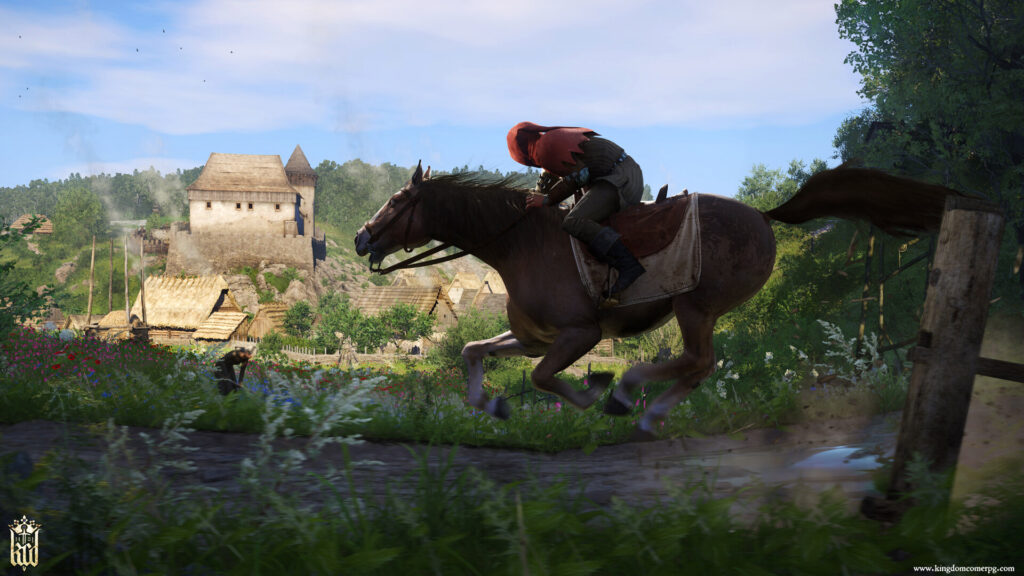
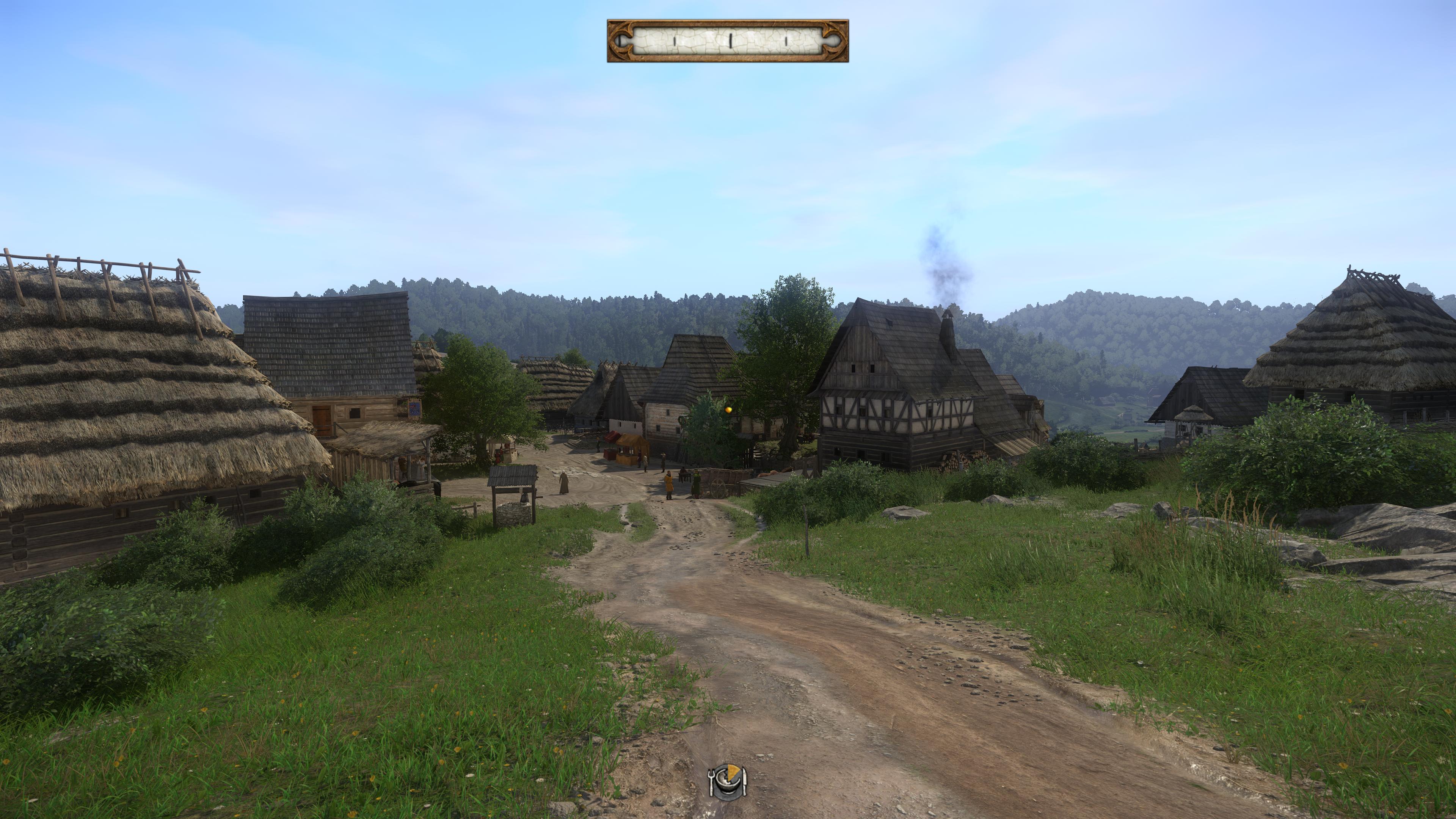
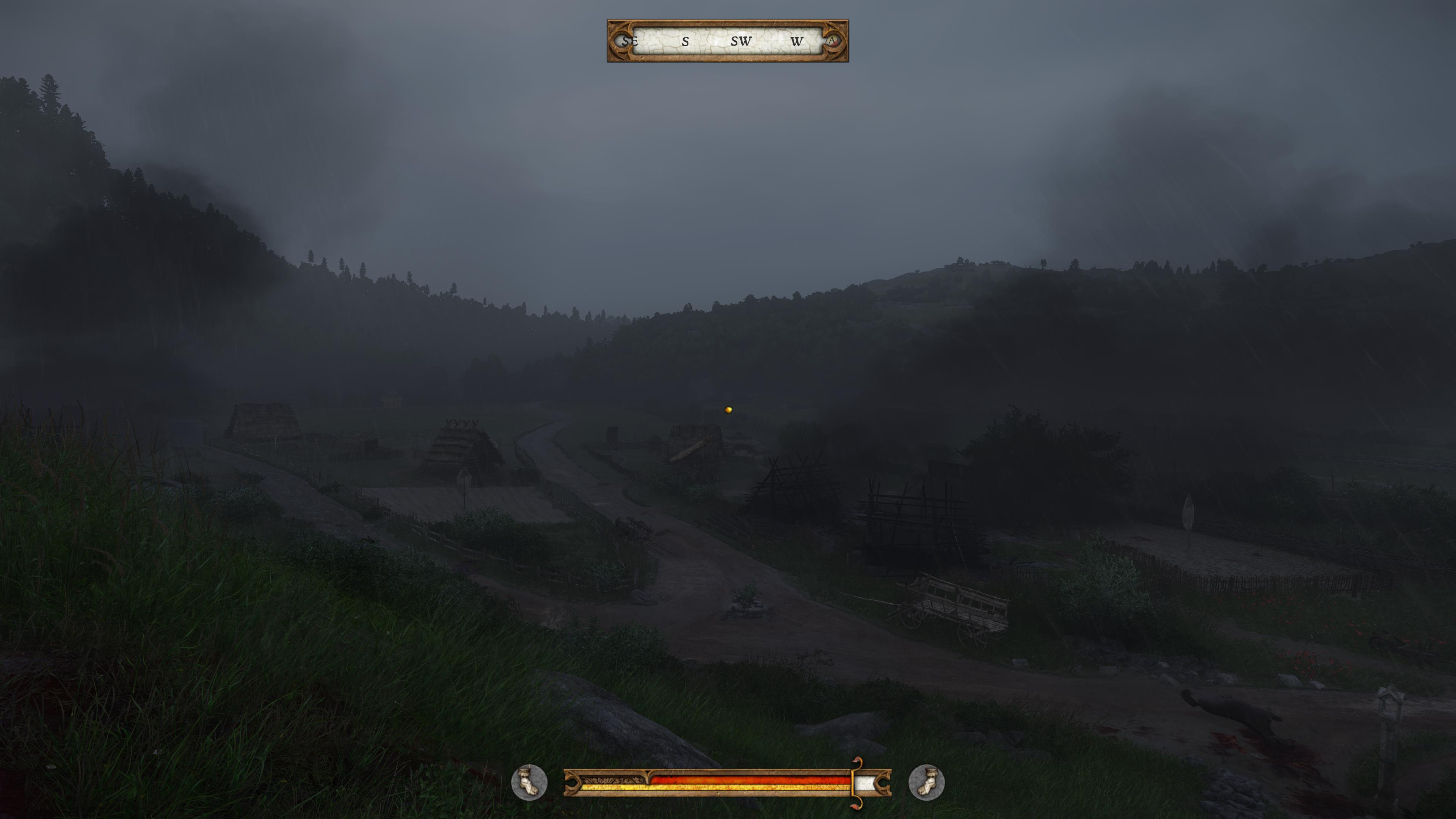


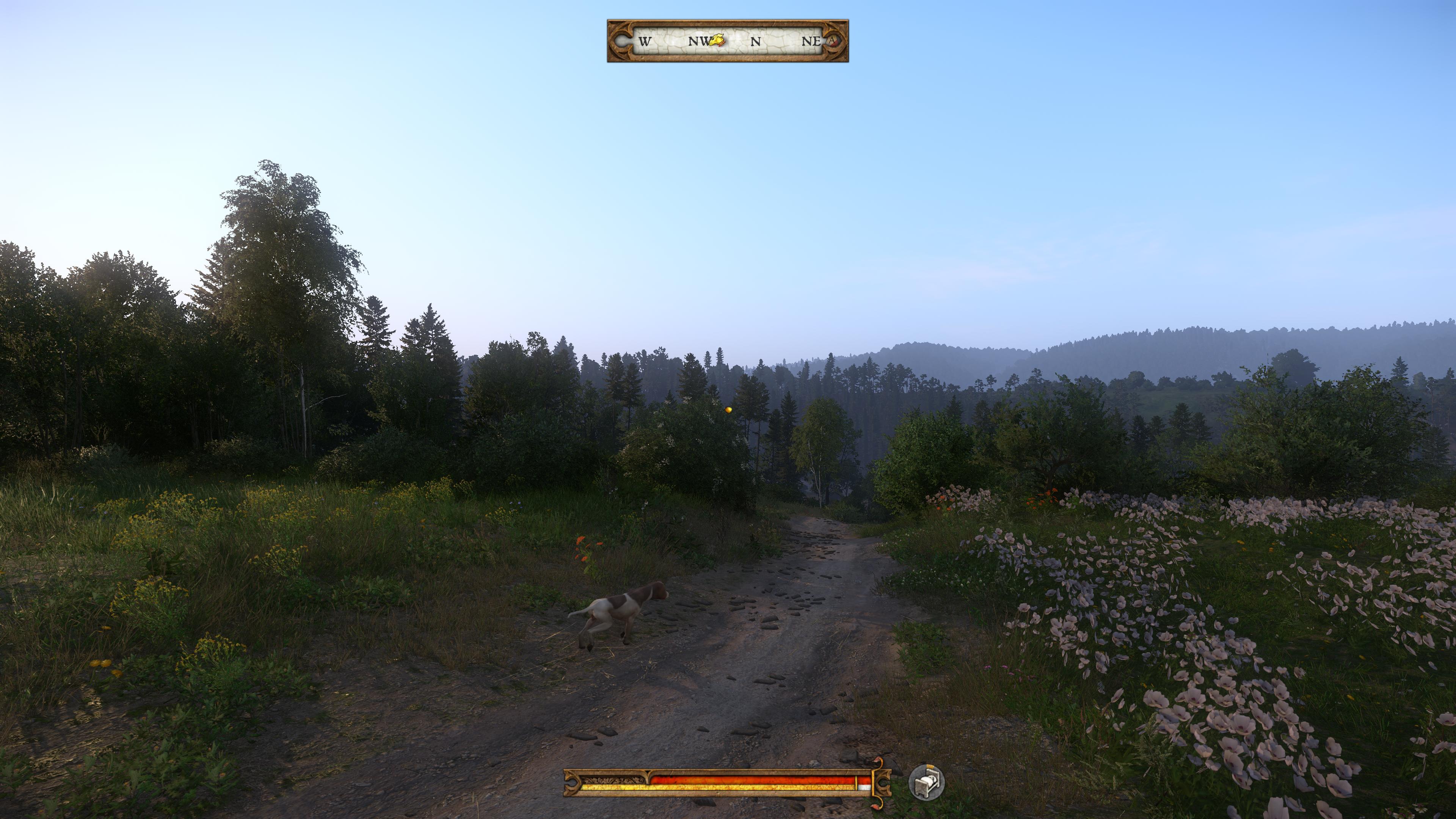

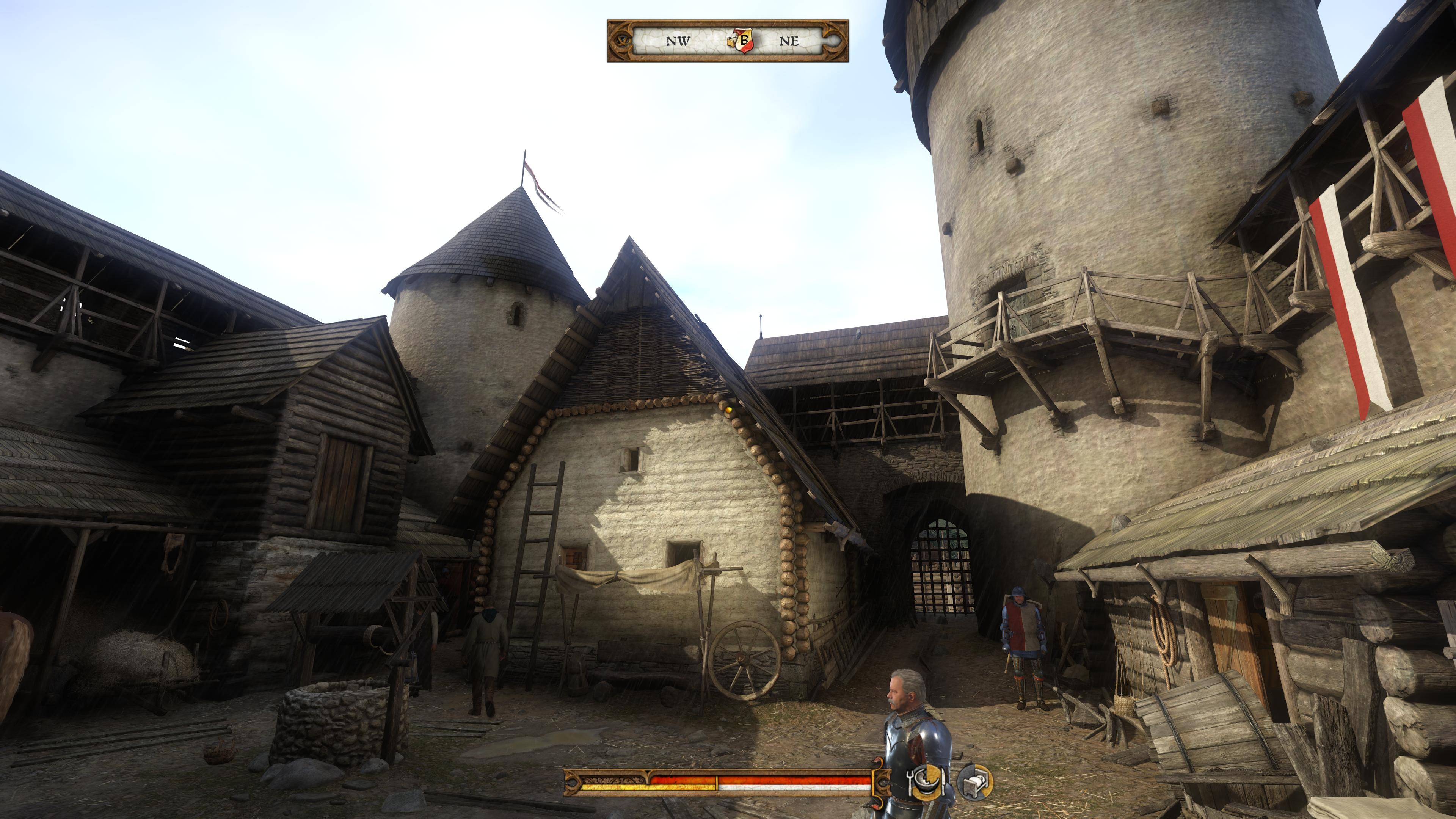
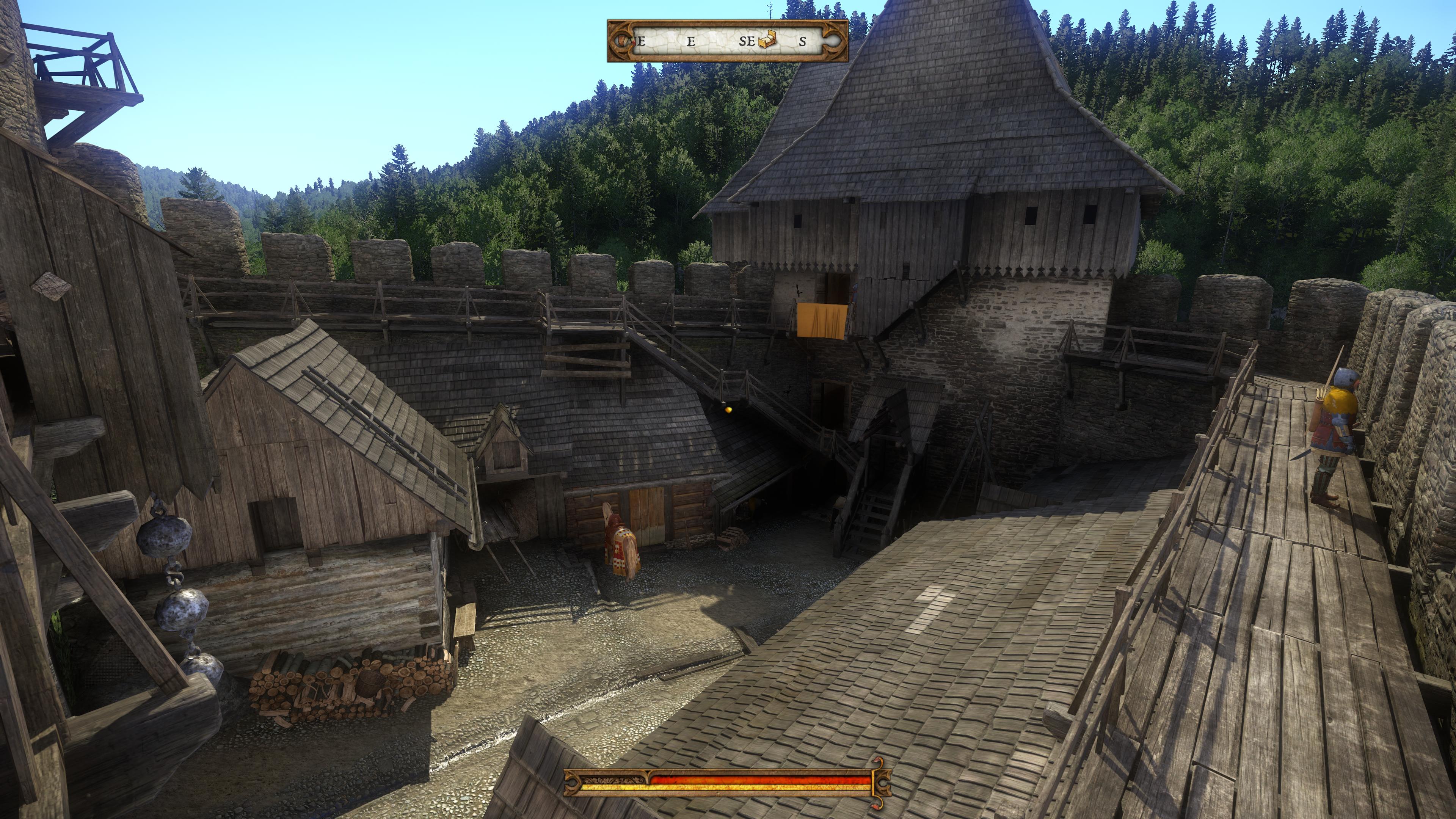
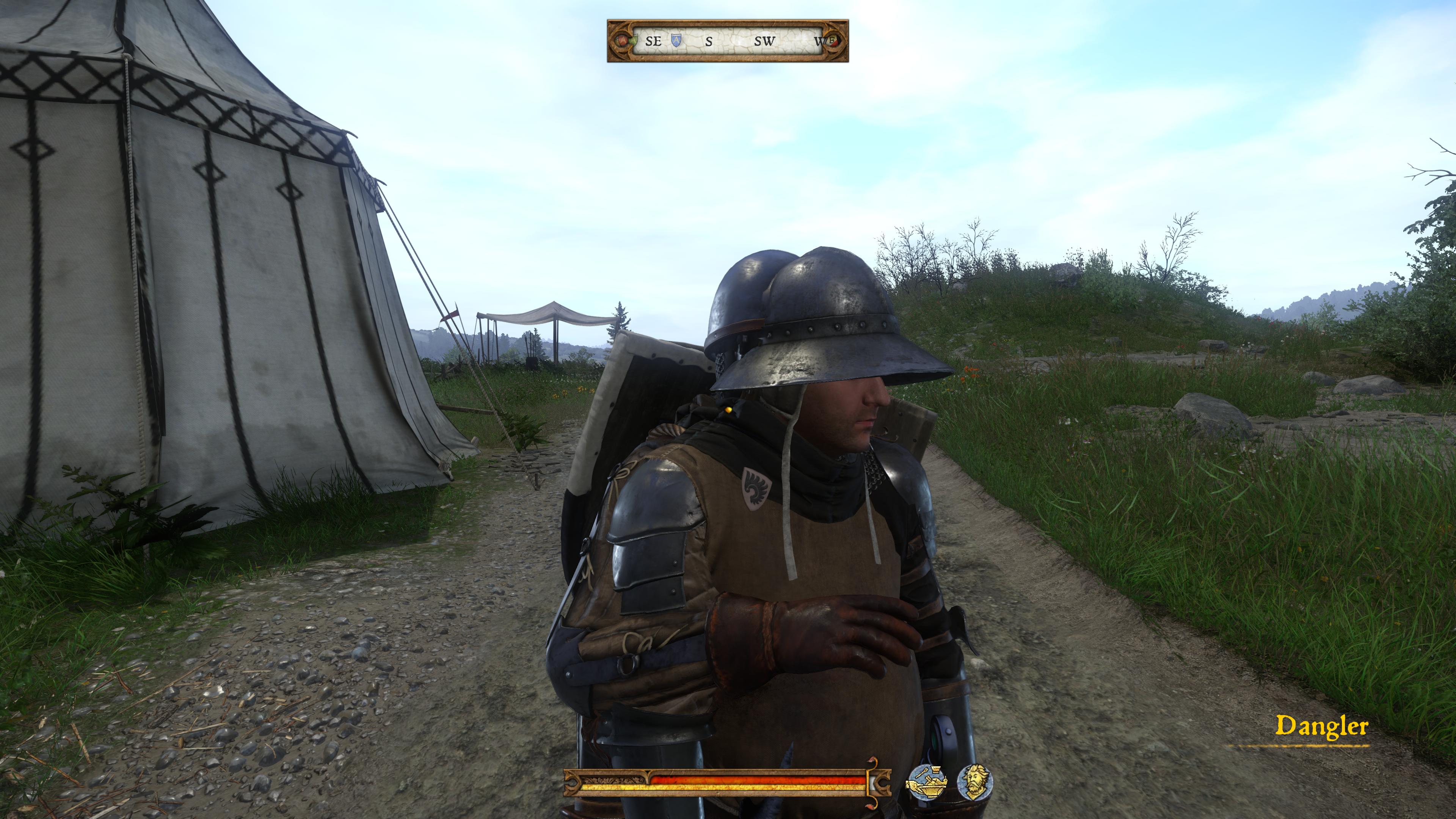
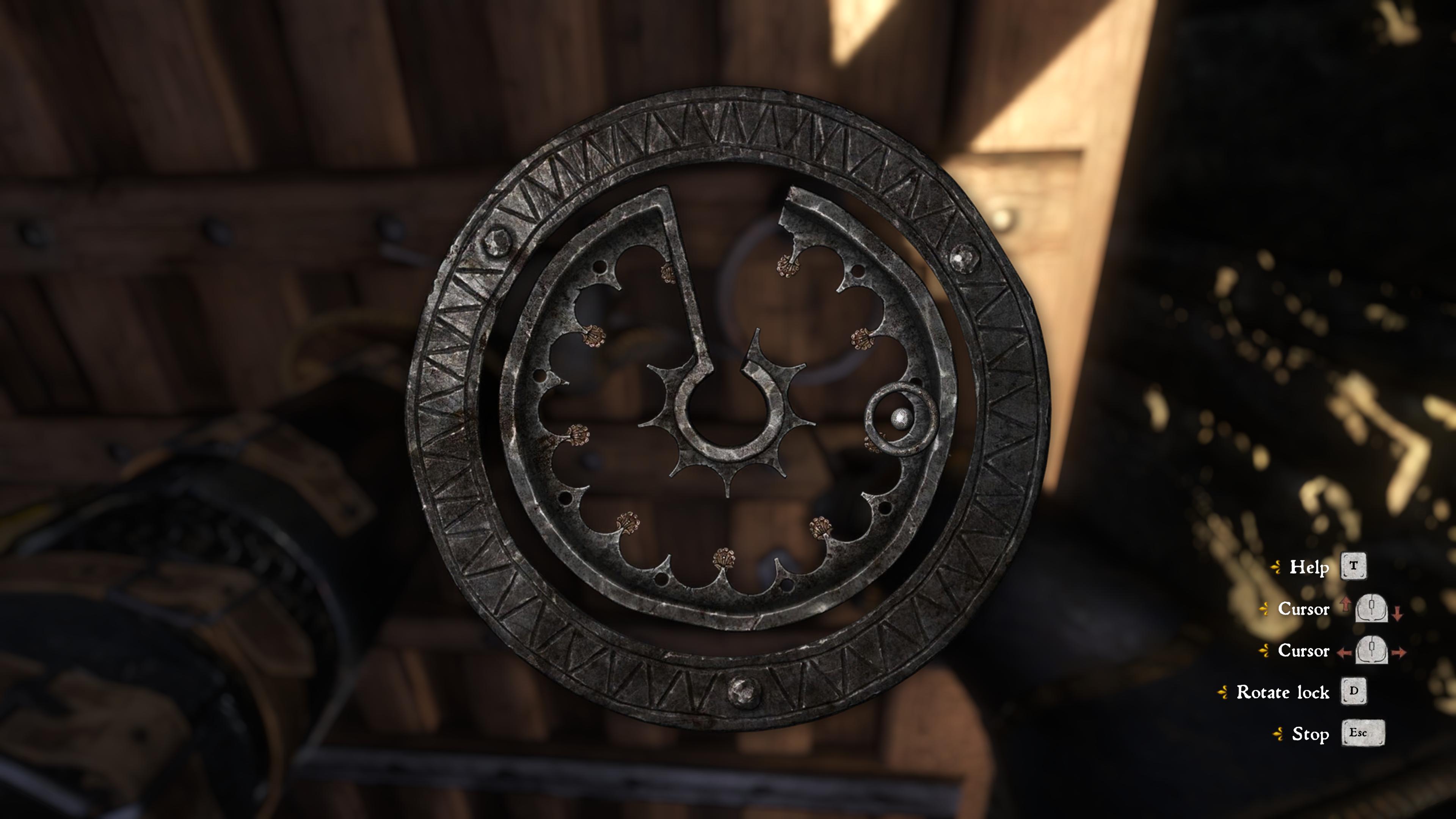
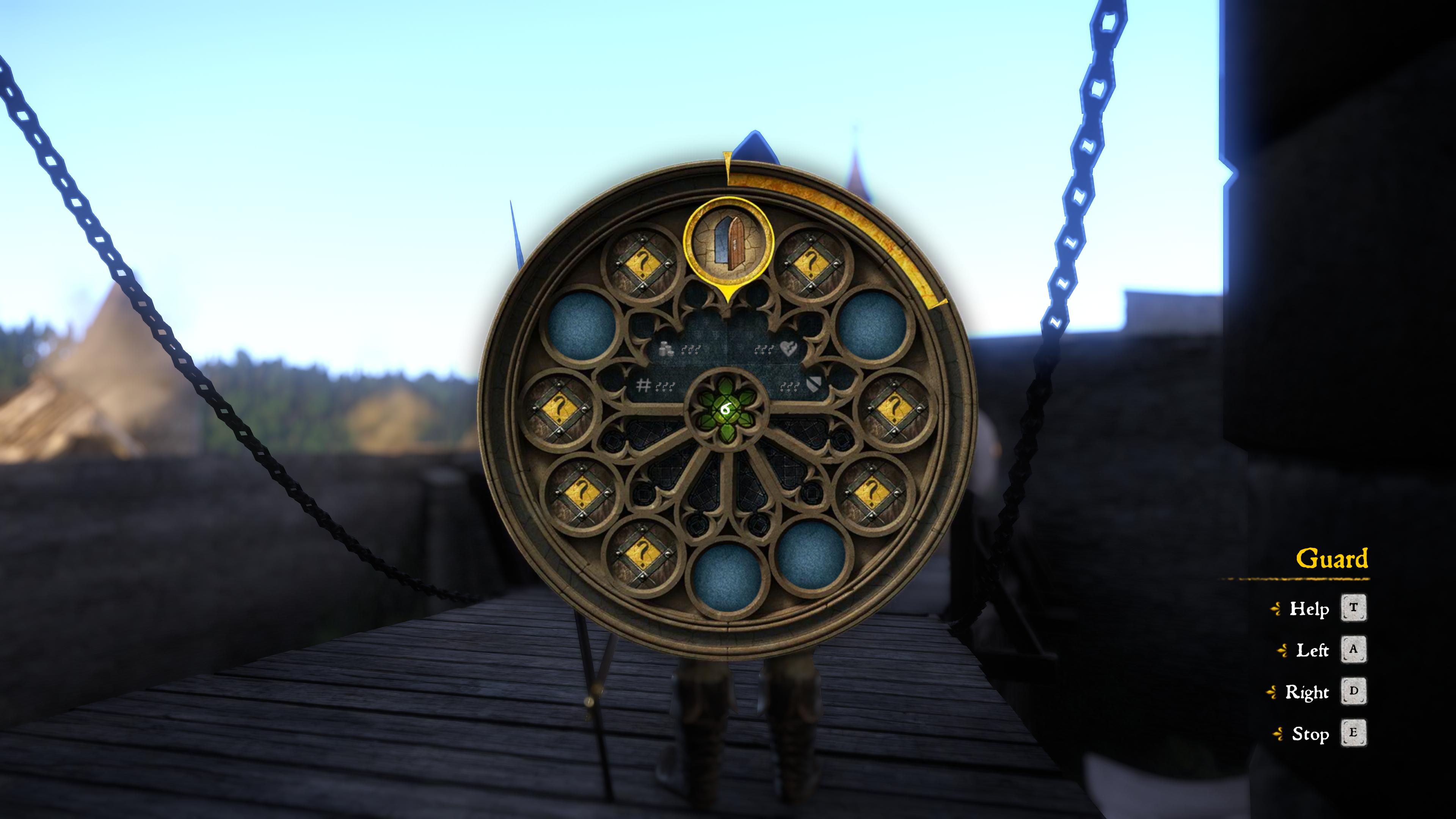

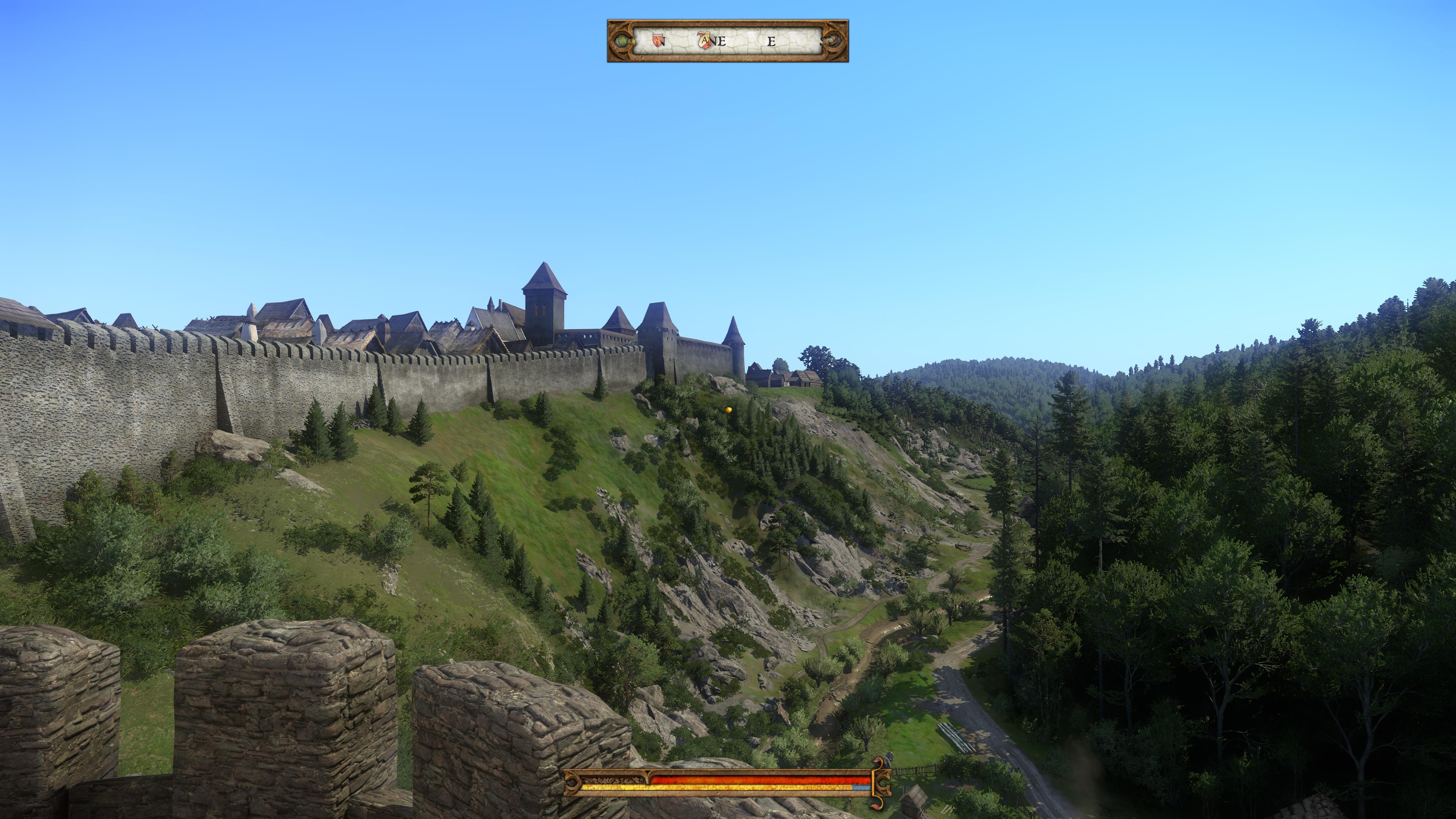
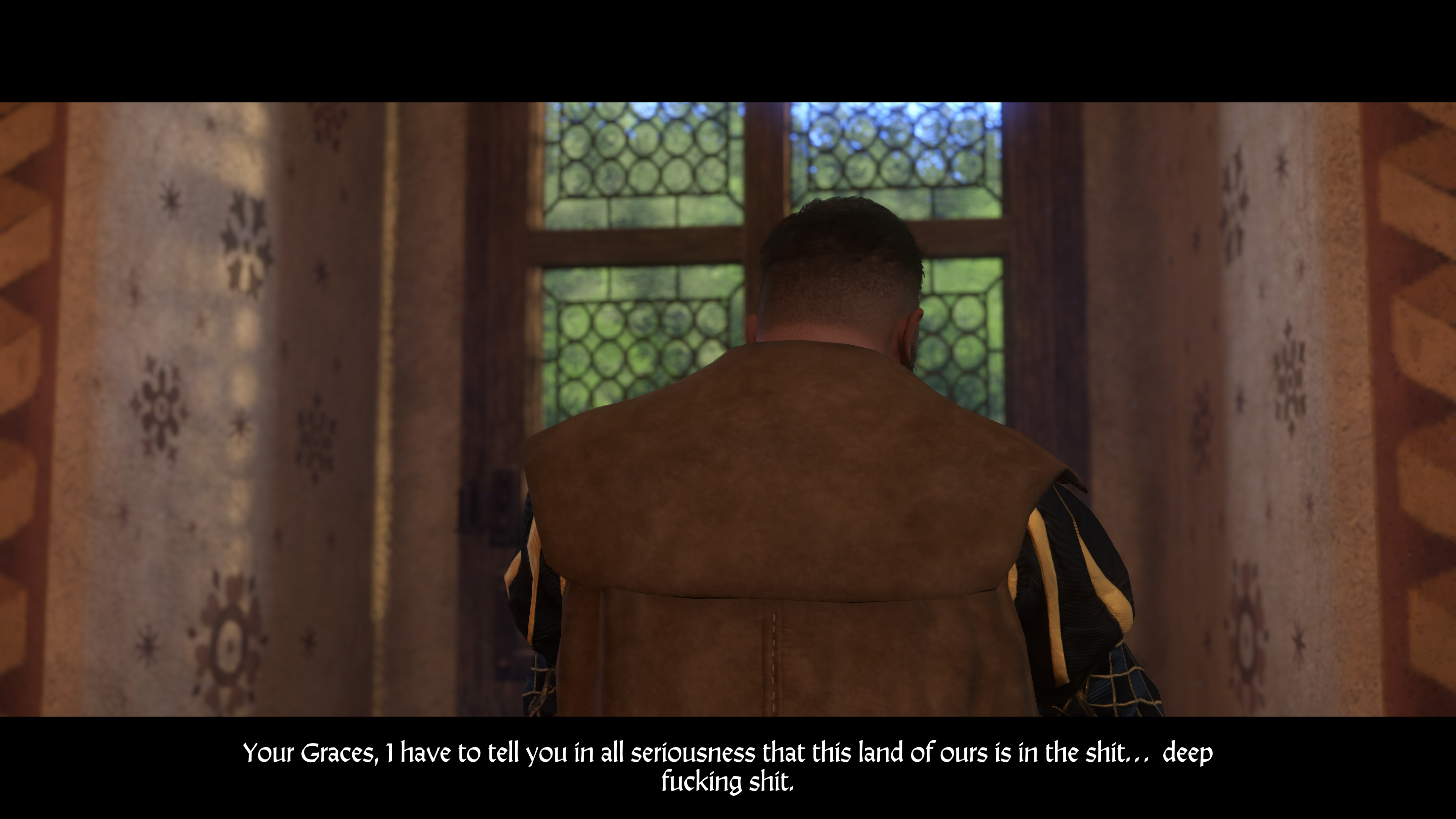
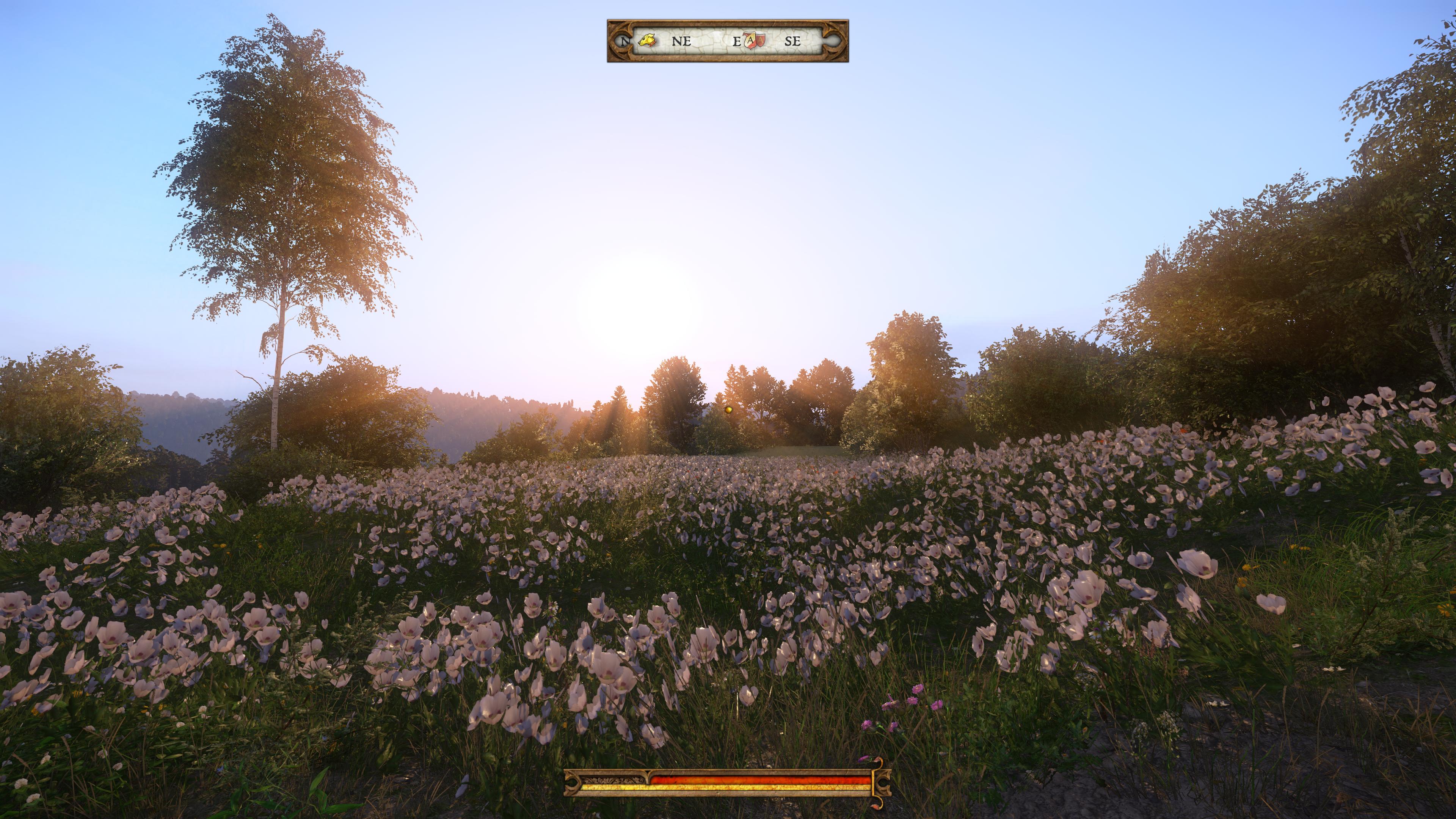

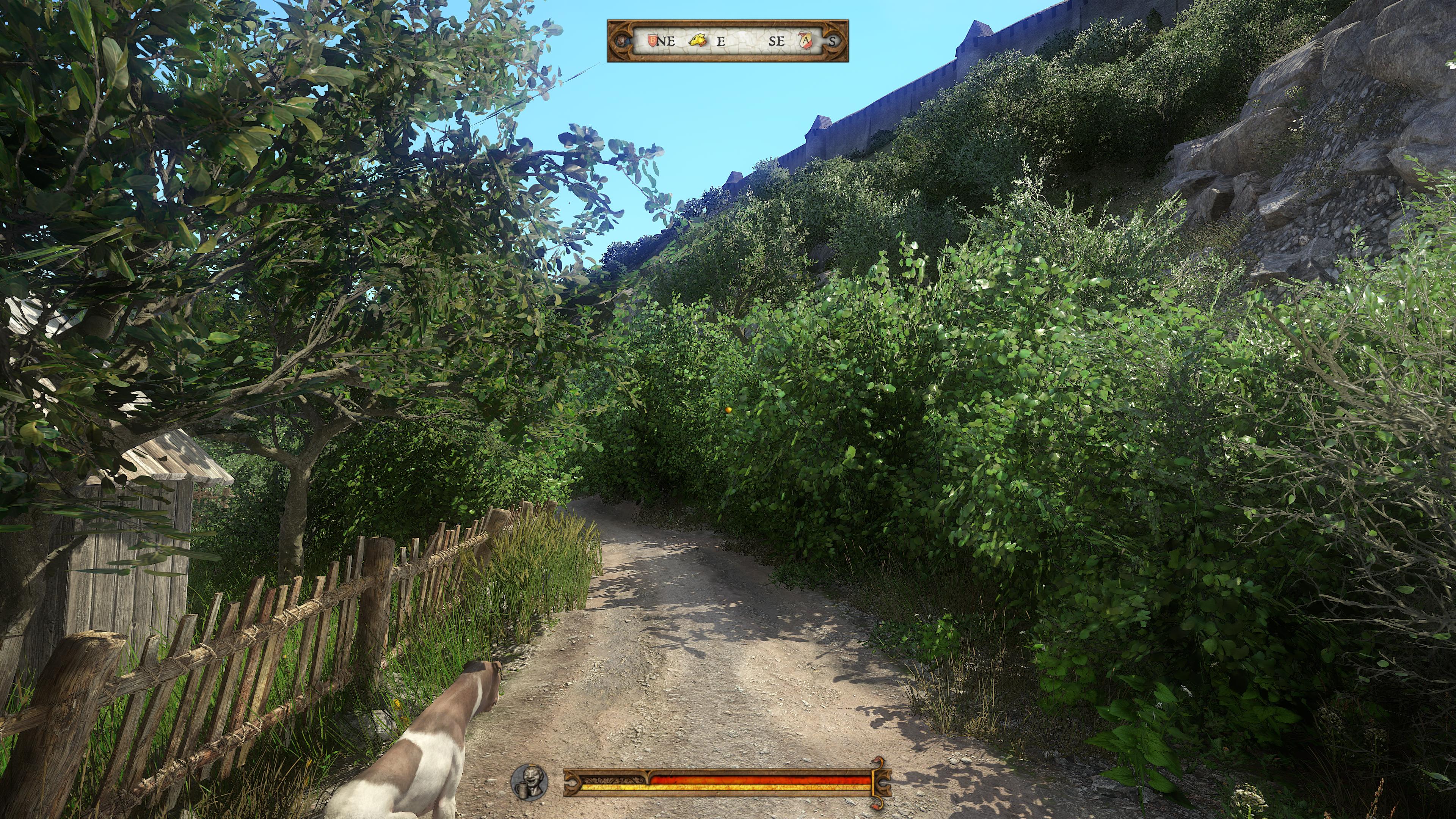
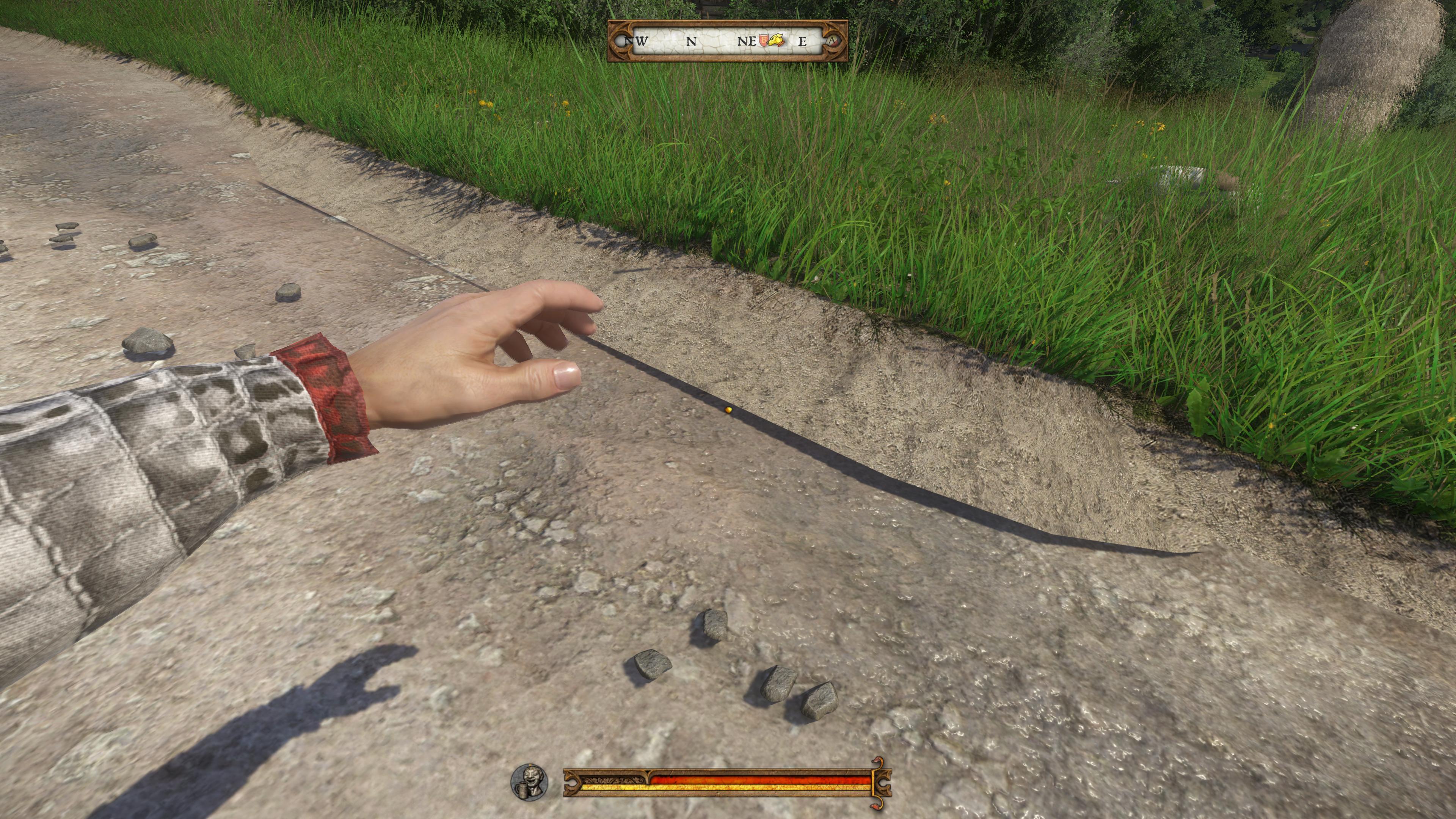
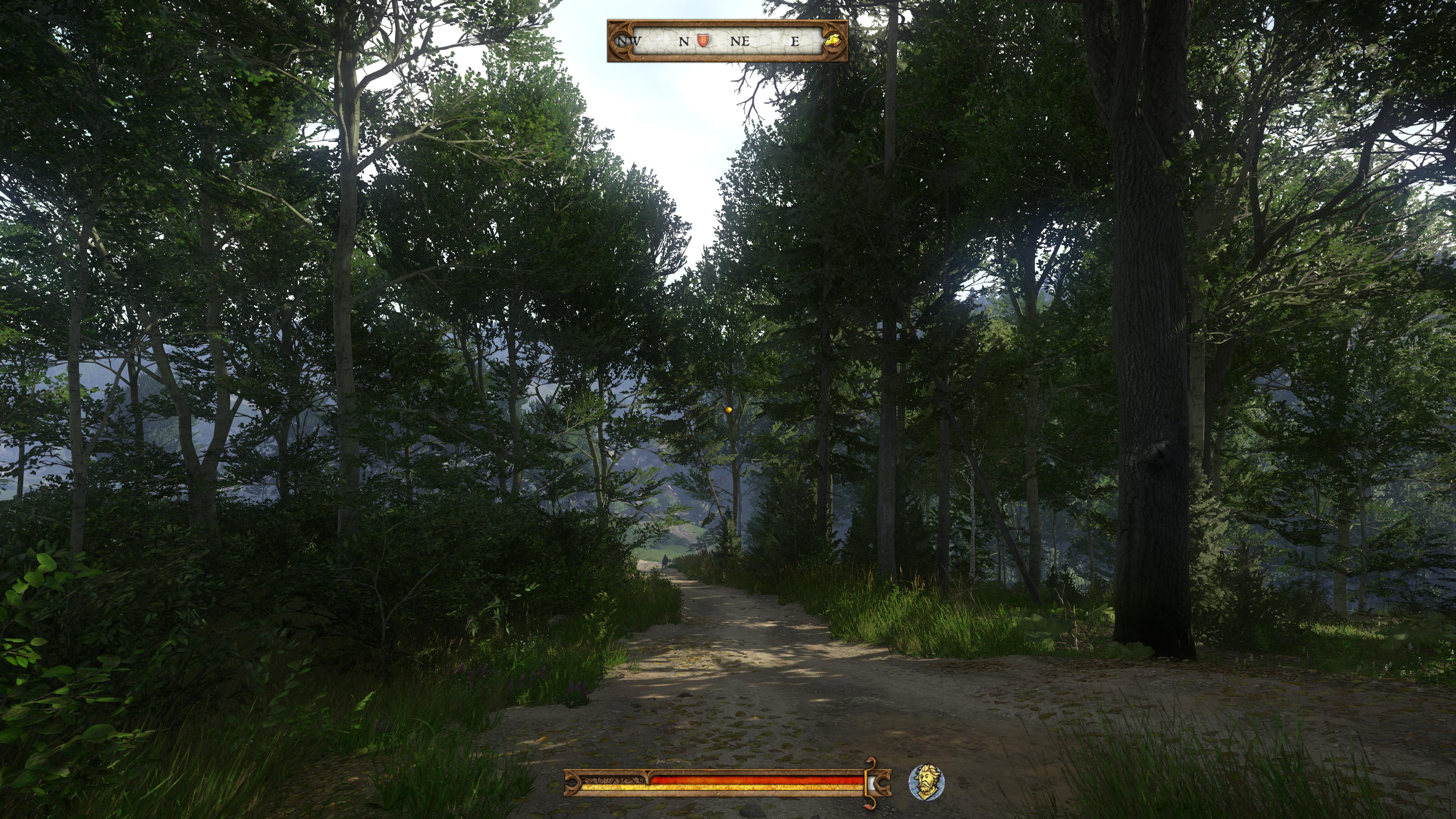




ехаааа, бравооо
Group E: “We have a few concepts but don’t know how to implement them so we’ll just wrap them around onto an overpriced game and hope that gamers will enjoy our ideas despite the glaring shortcomings.”
Let’s be real here, of the 100+ hours of playtime, 25 hours is sitting in front of screen listening to overly lengthy dialogue or watching cutscenes, 20 hours is waiting for sleeping/doors/dialogue fade in and fade out/eating/cleaning/other chores, another 25 hours for walking between quest locations and then you get at best 30% actual gameplay. The combat itself is just skyrim combat with added clunky mechanics that are poorly done. There are games with way better combat out there and even skyrim itself is better due to how everything there actually working fine. The story would be nice for a… Read more »
On the contrary, Kingdom Come is a game that doesn’t waste a minute, unlike Skyrim which is more guilty of your general criticism. Your comment is very peculiar because almost everything you claim is incorrect. Let’s break down your criticisms one by one: “25 hours of overly lengthy dialogue” – Nope, strangely enough you are making a very false portrayal of the game. It has very few cutscenes and all of these are skippable. What you describe is more like a Sony console title, e.g. Metal Gear Solid (before the fifth). Kingdom Come is by far and large a gameplay-driven,… Read more »